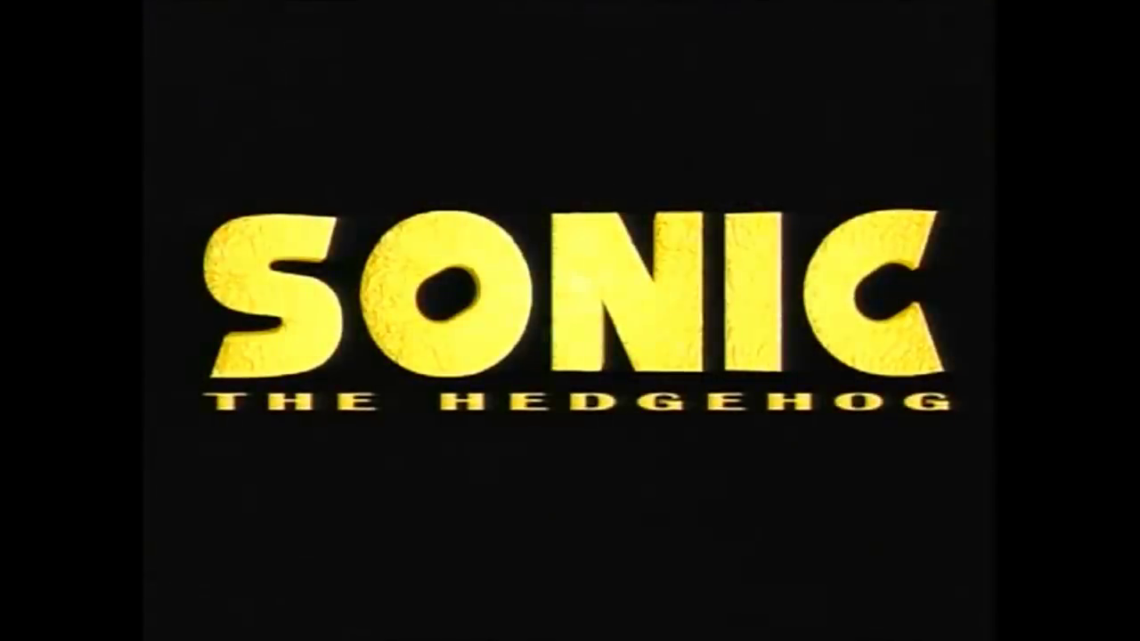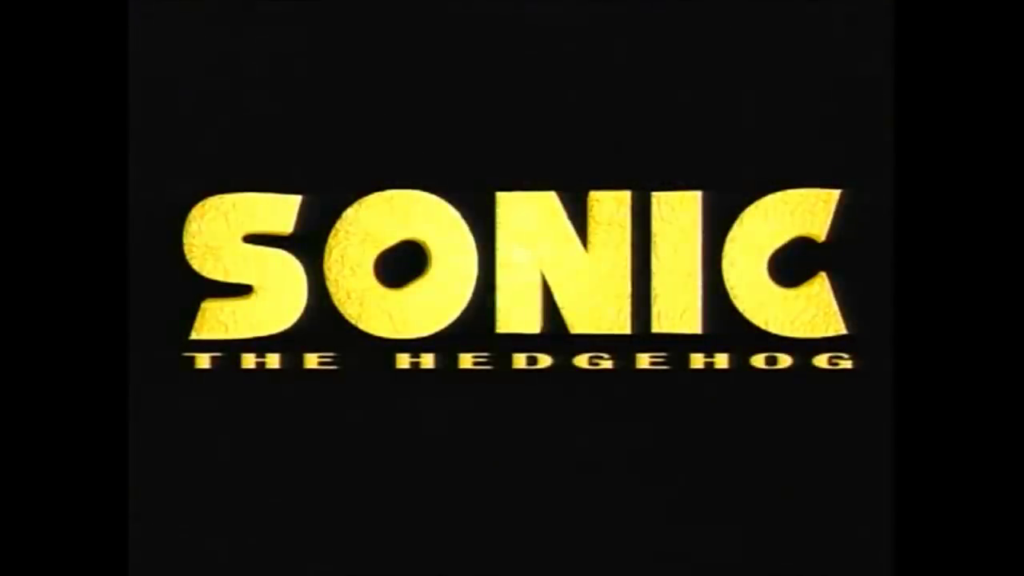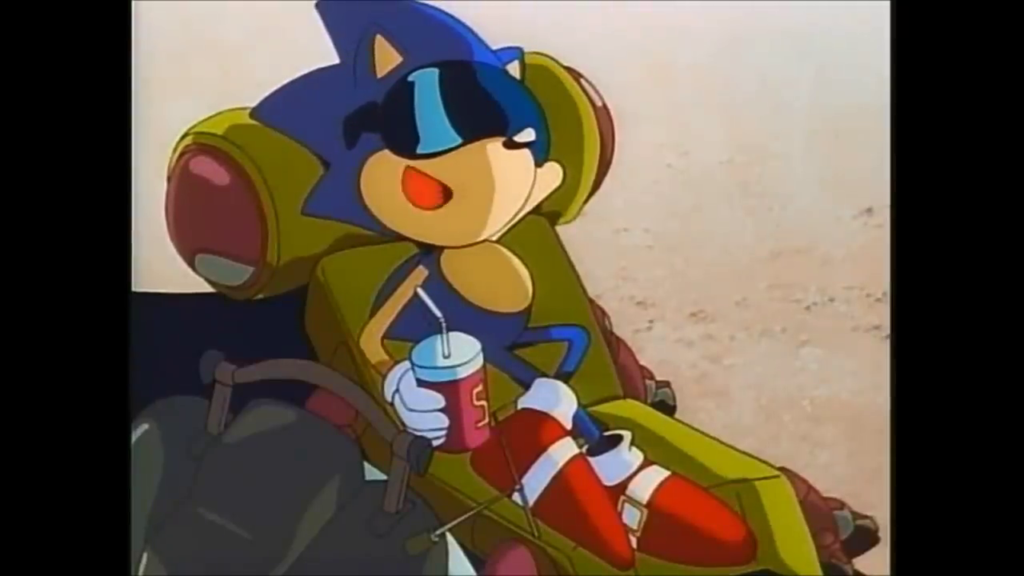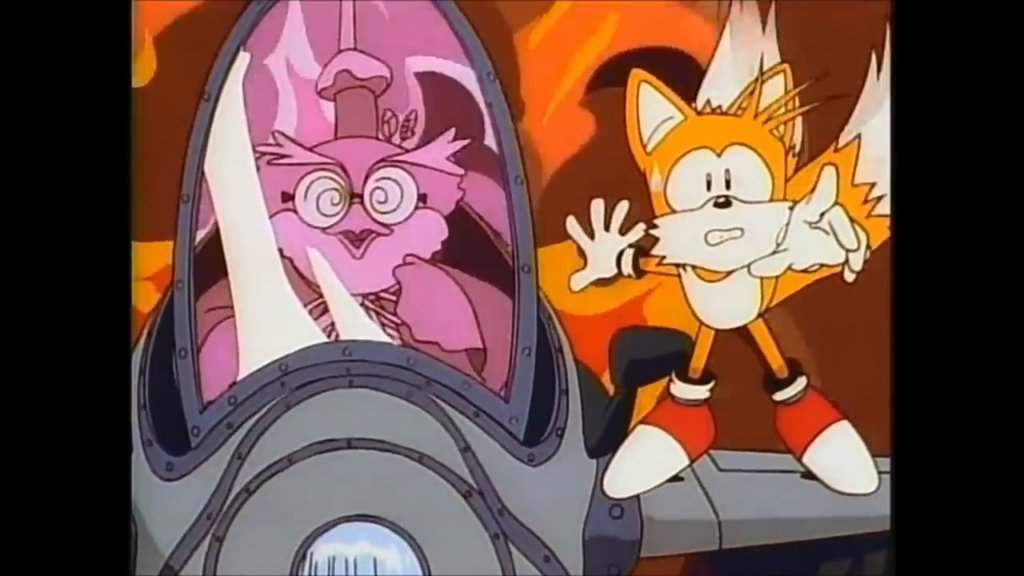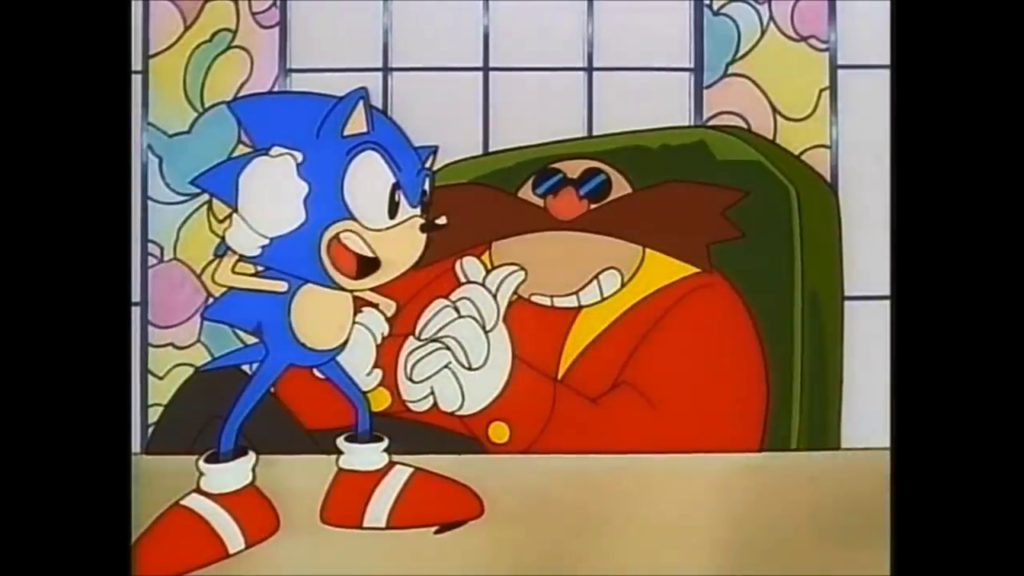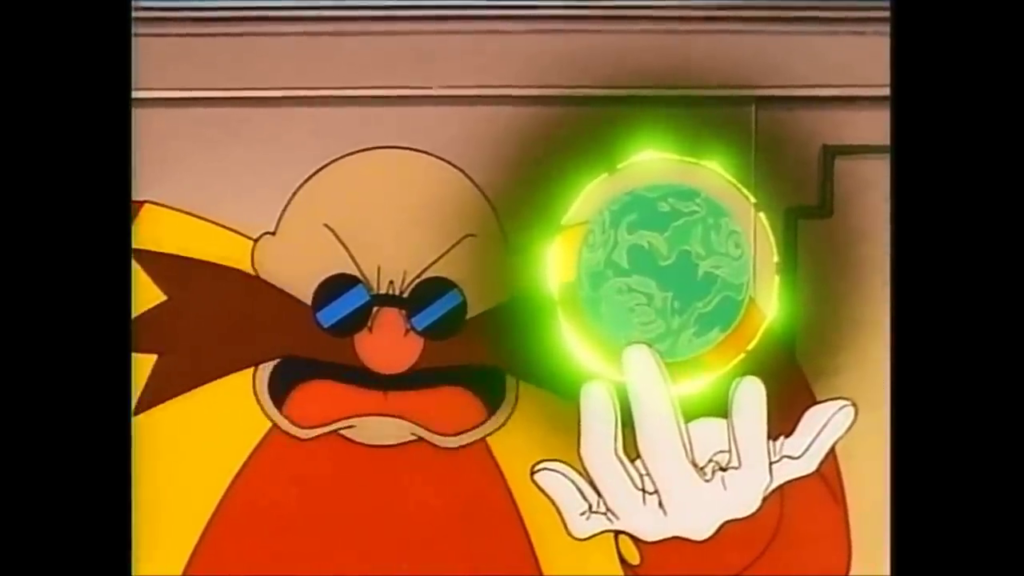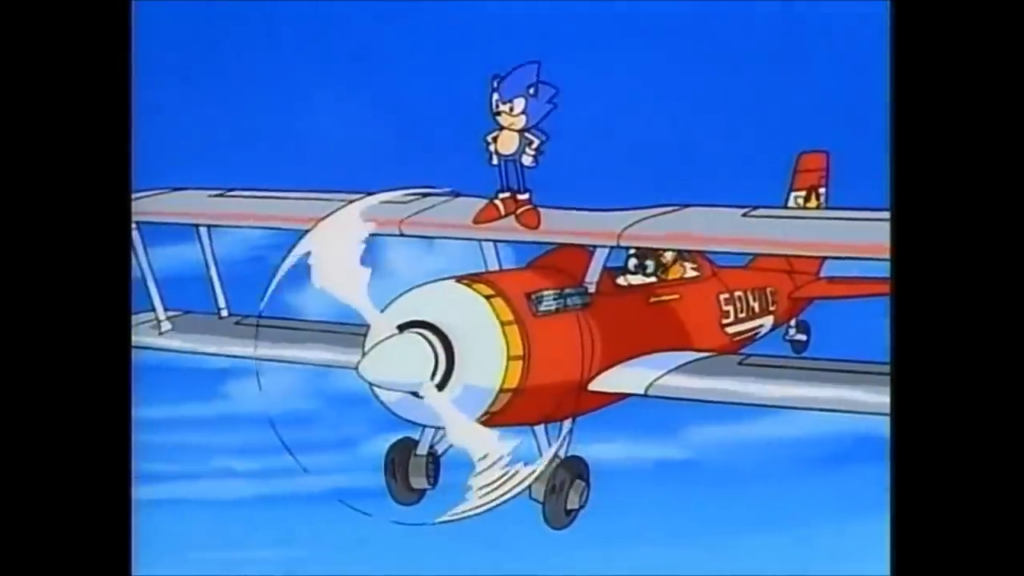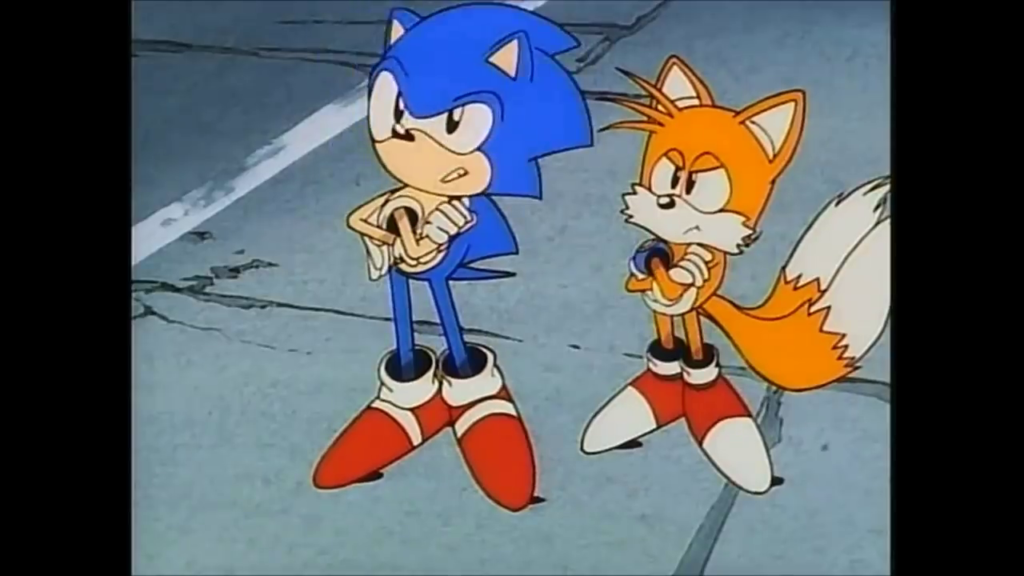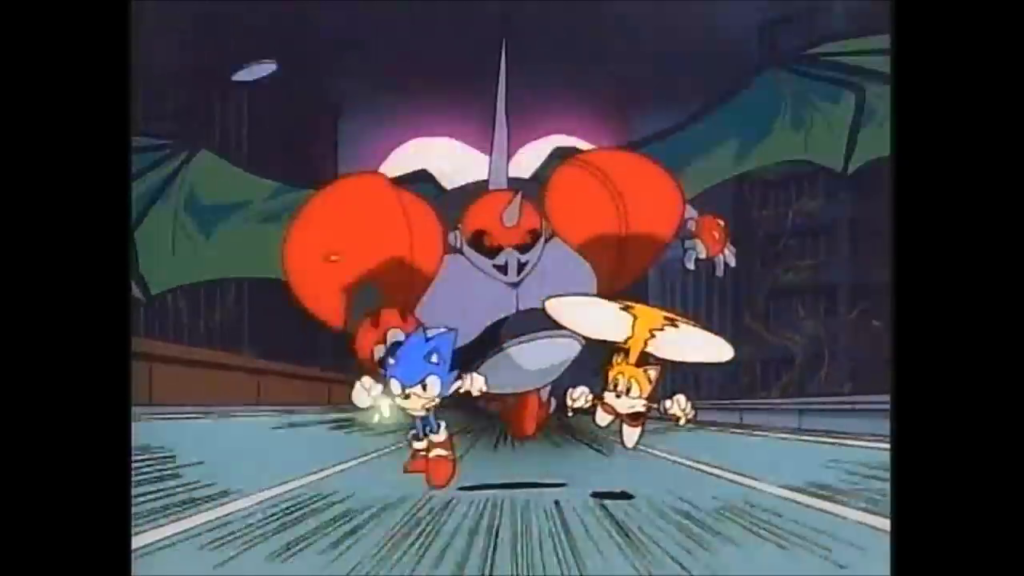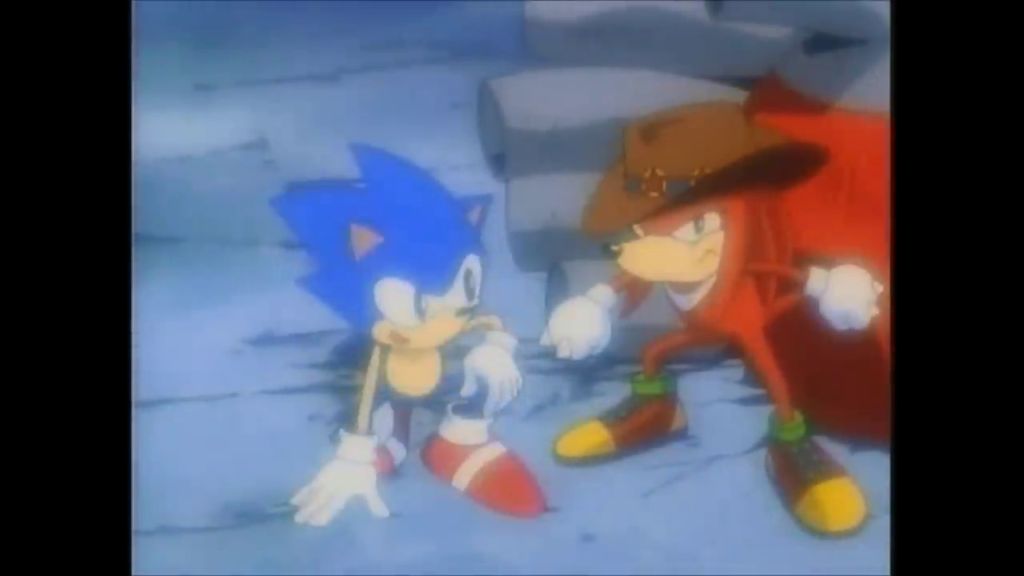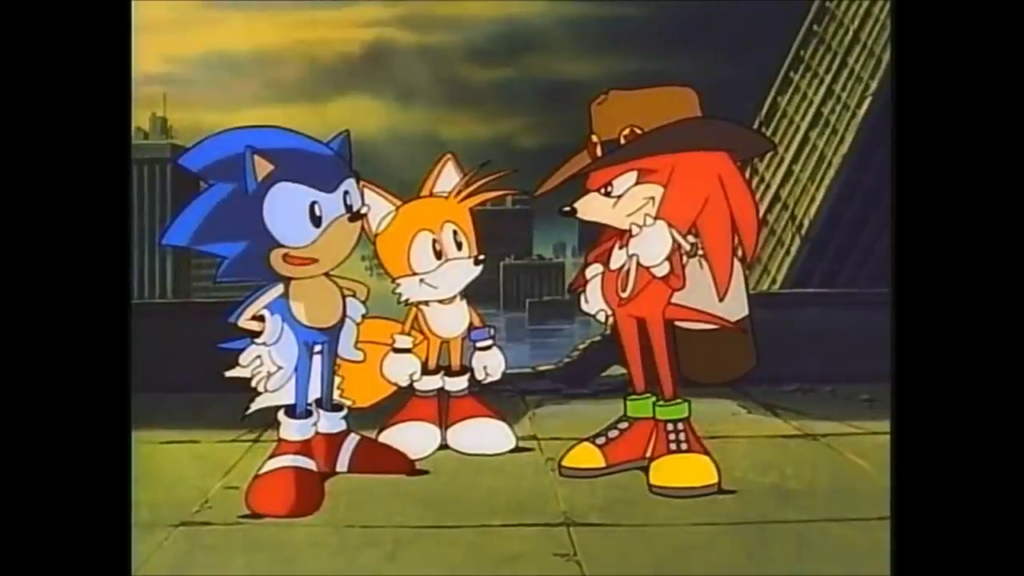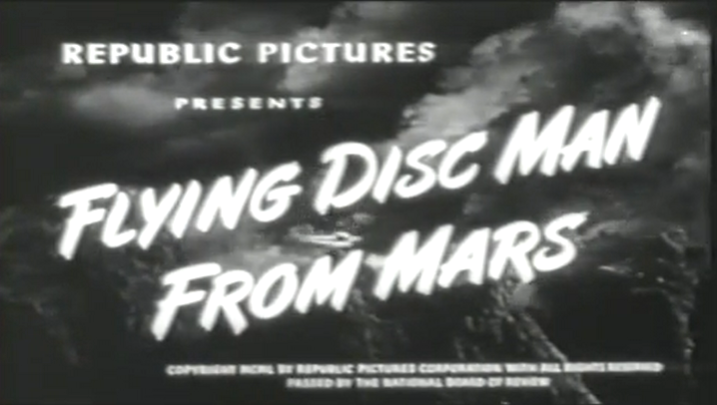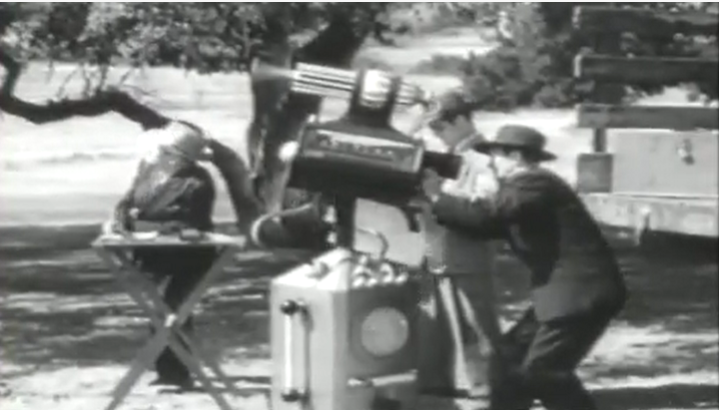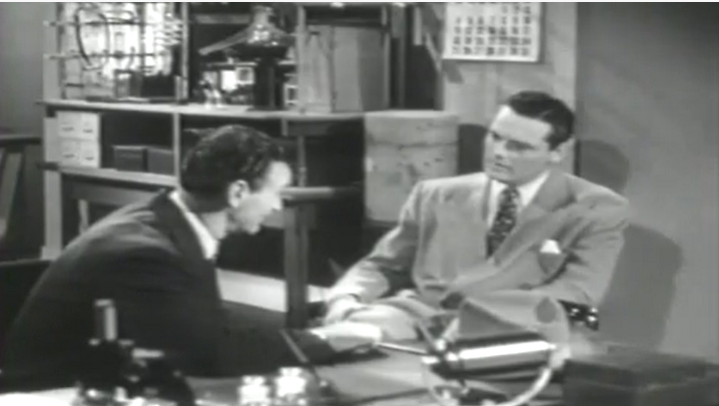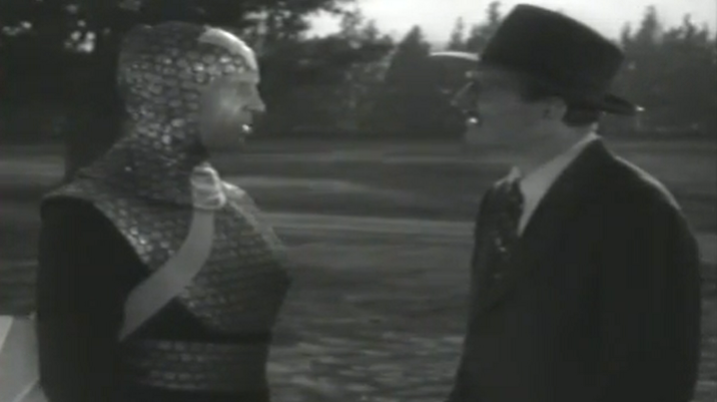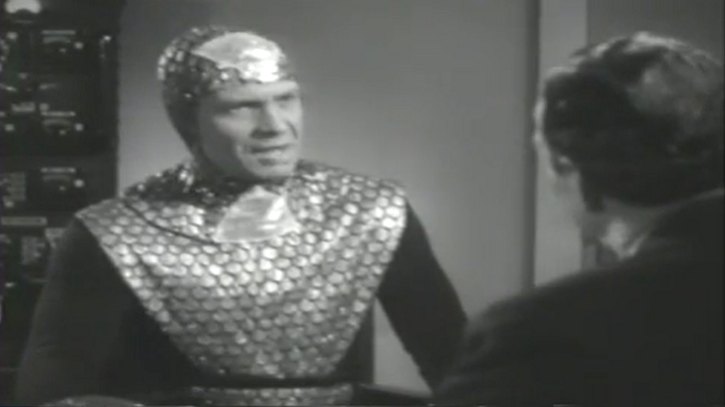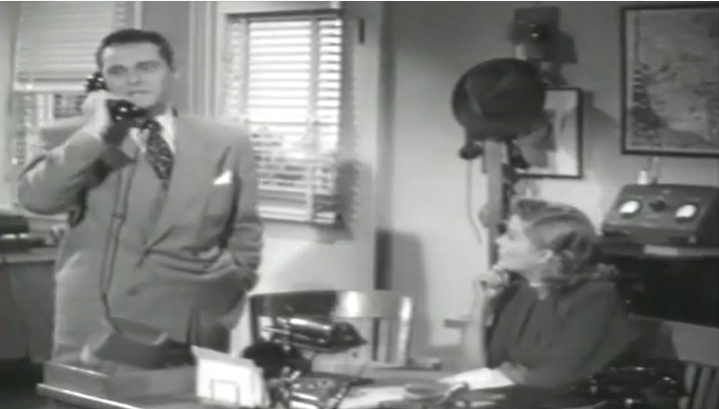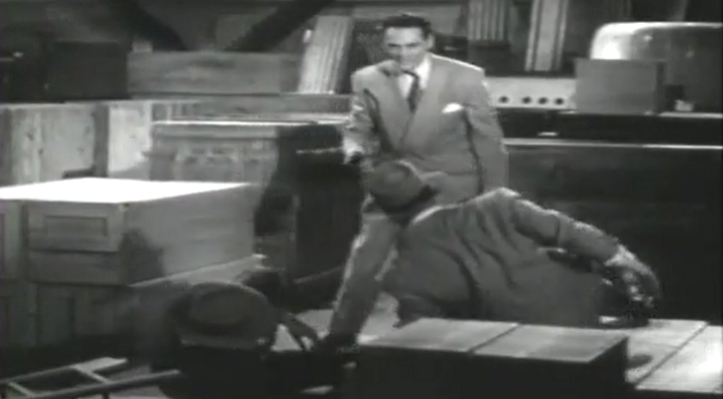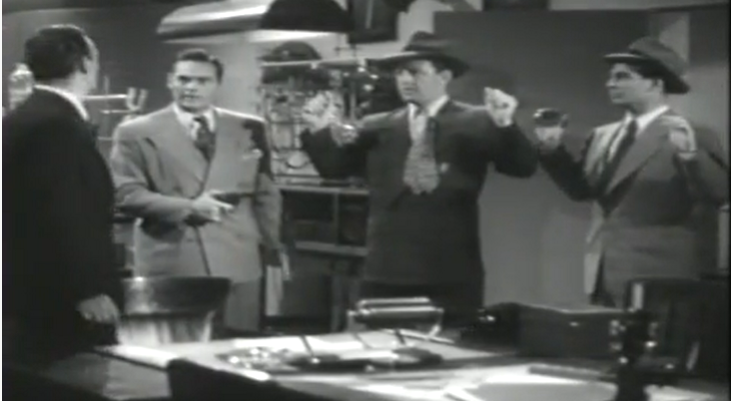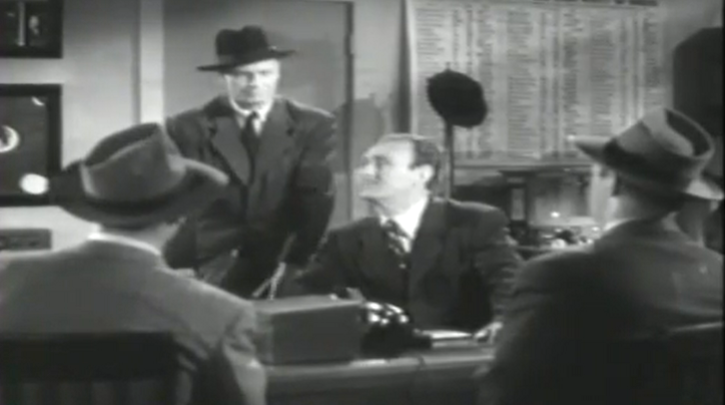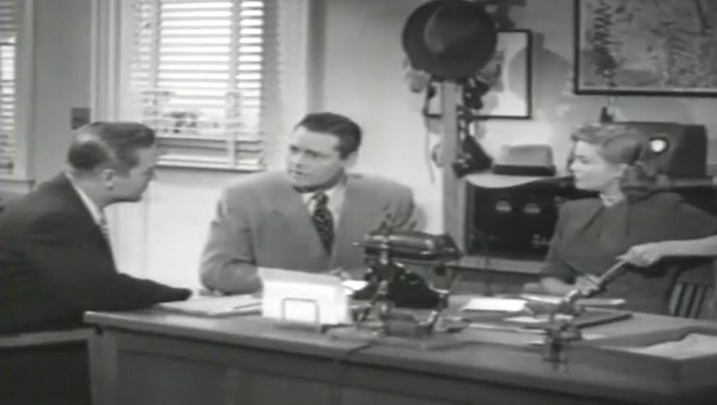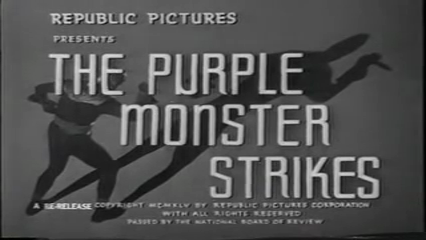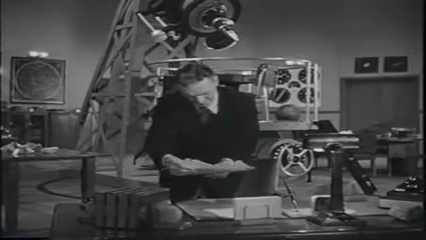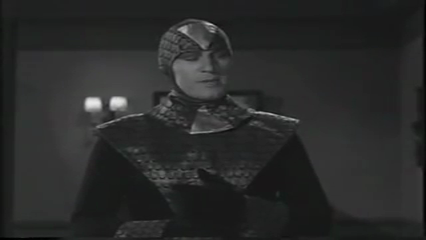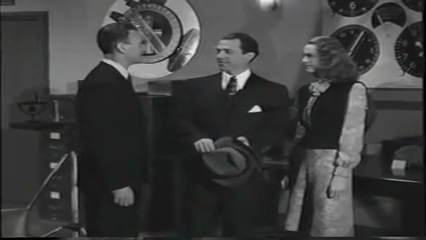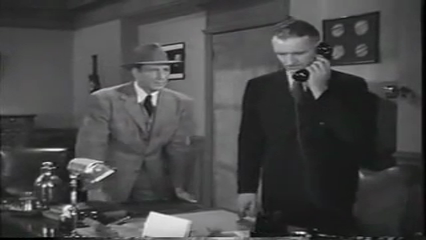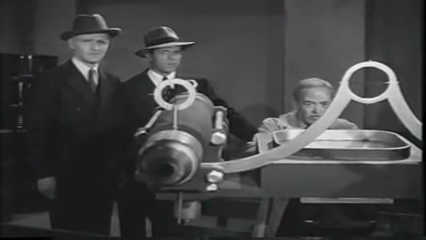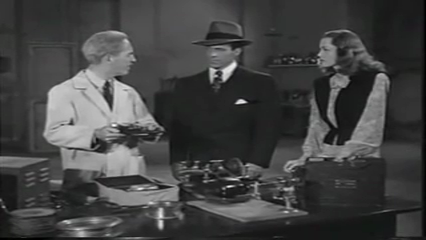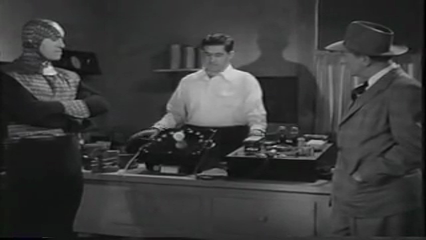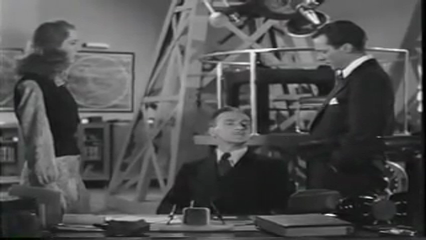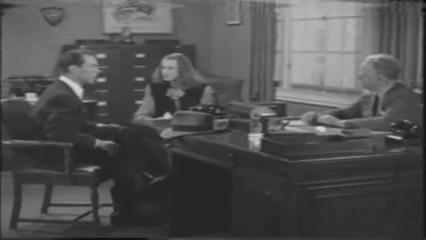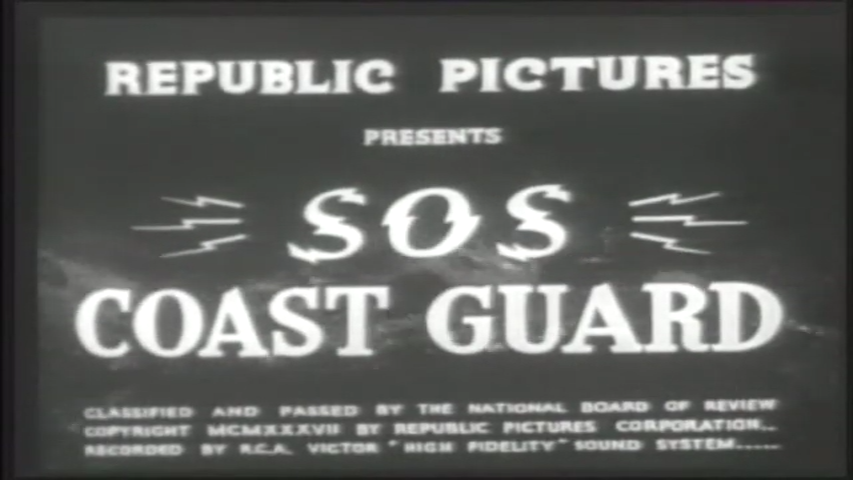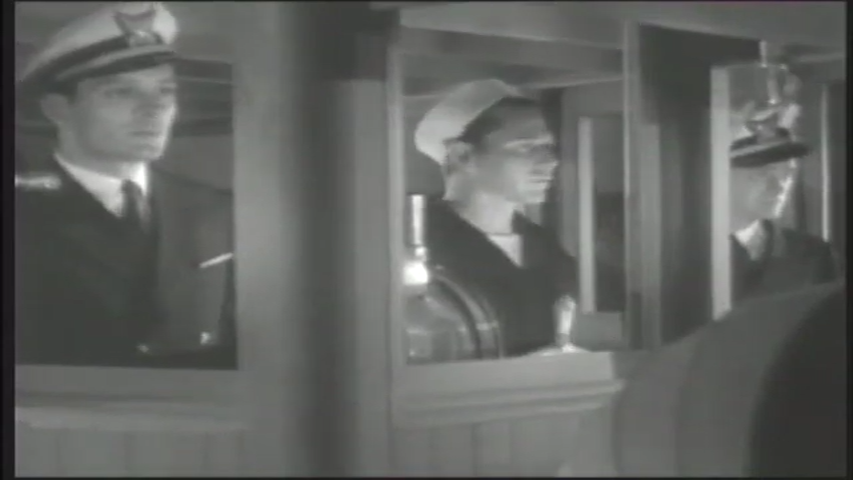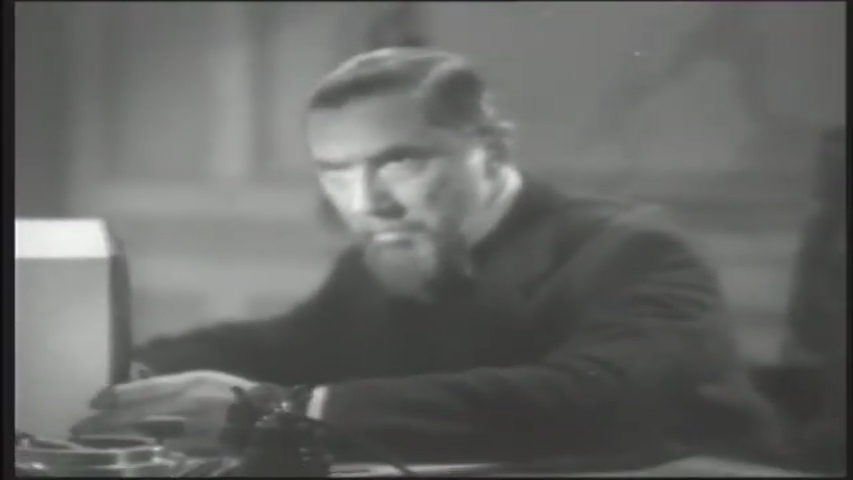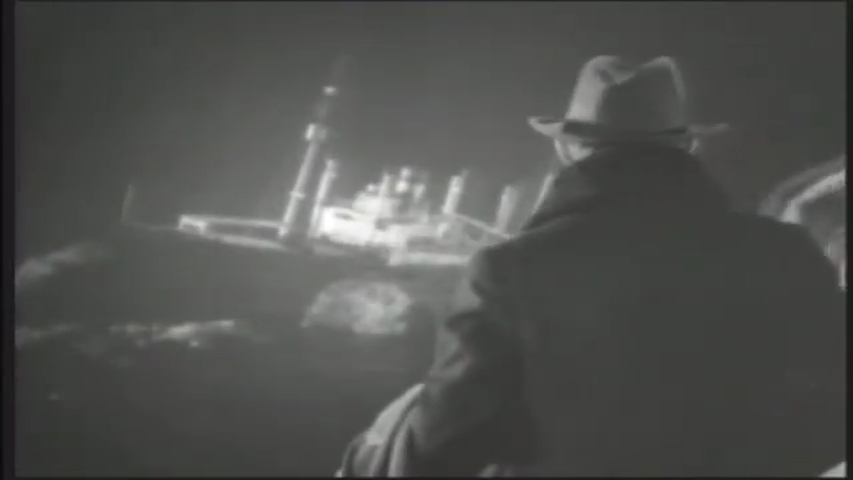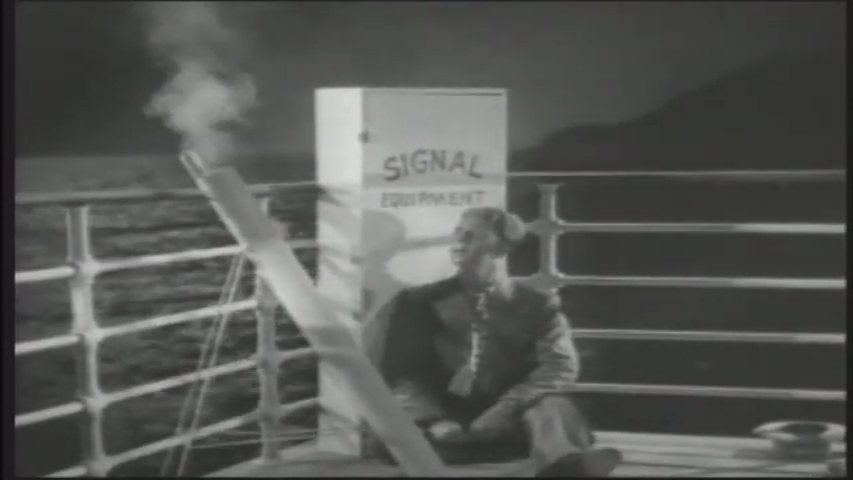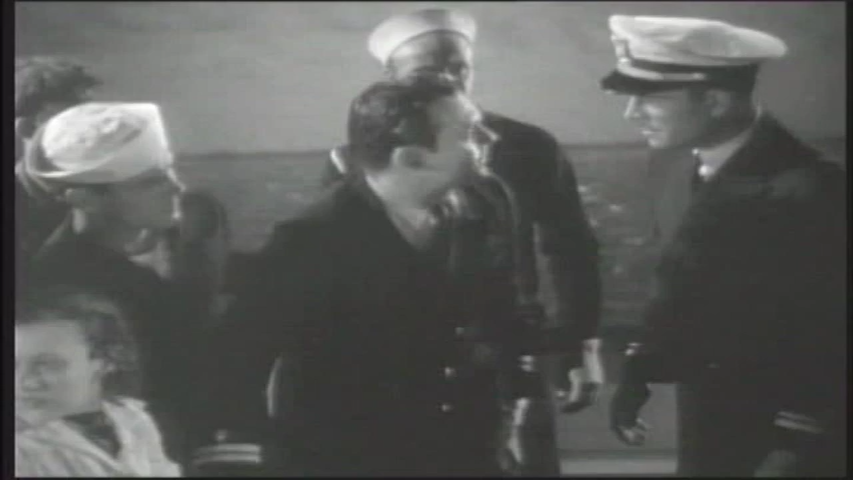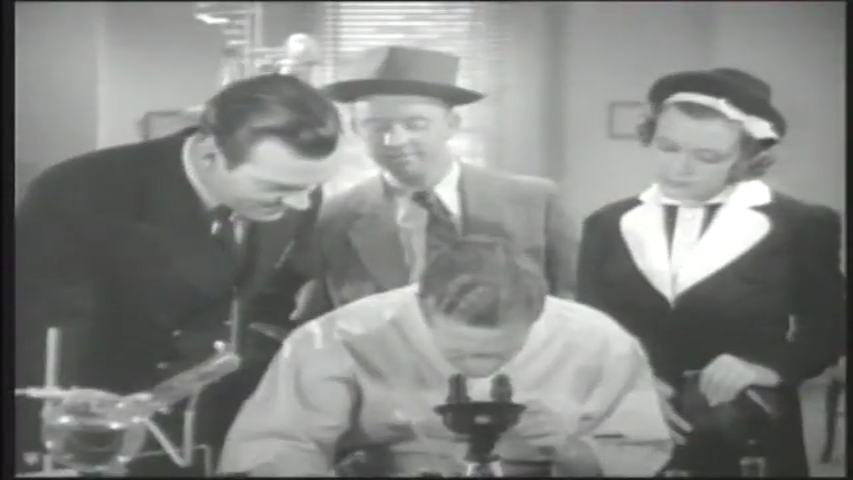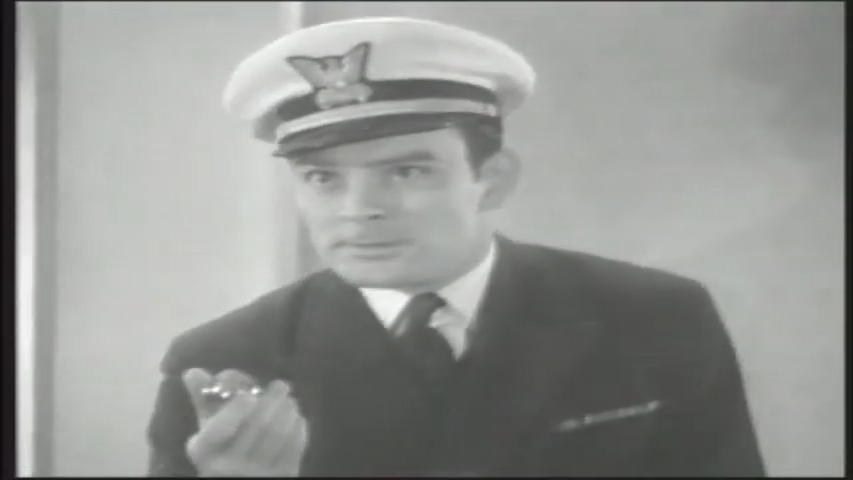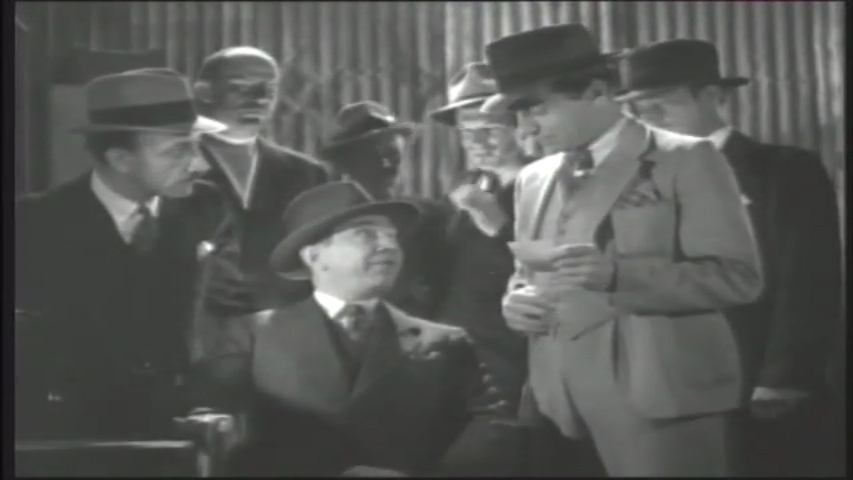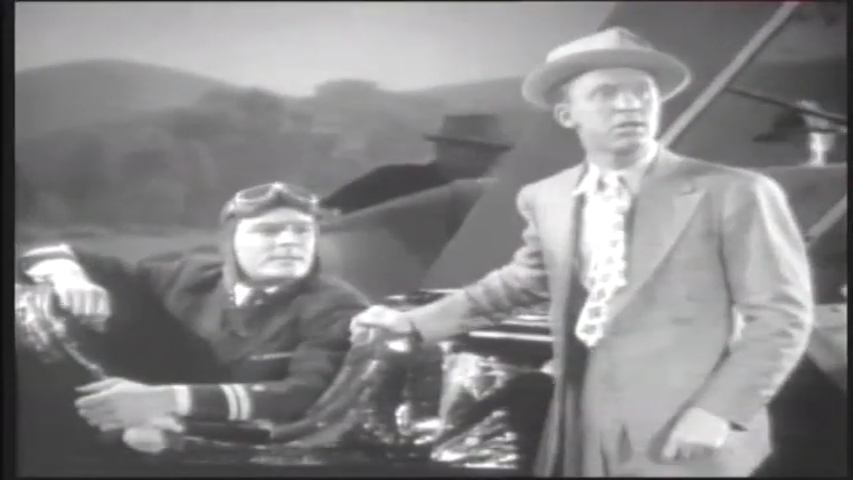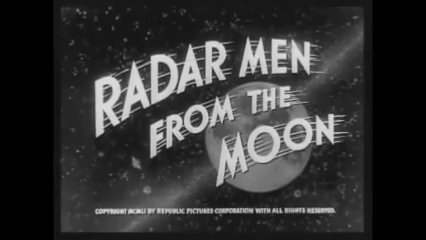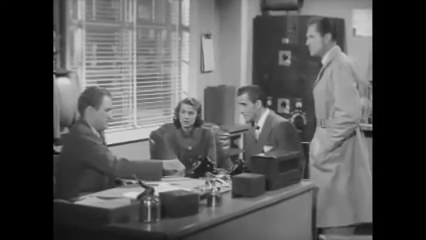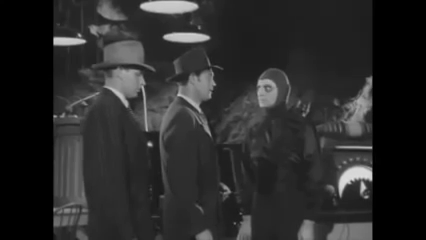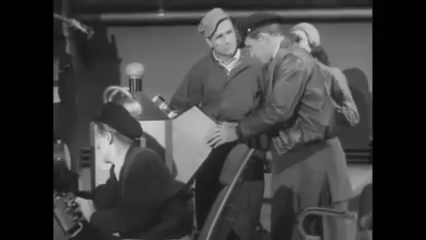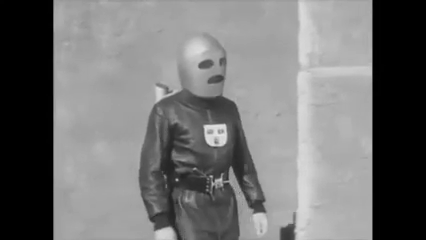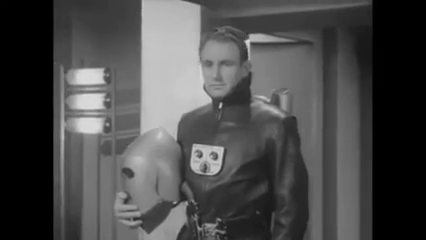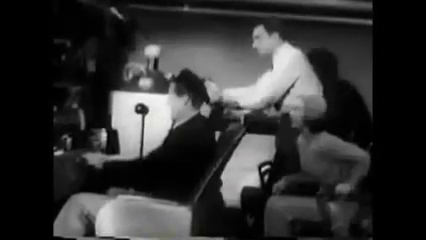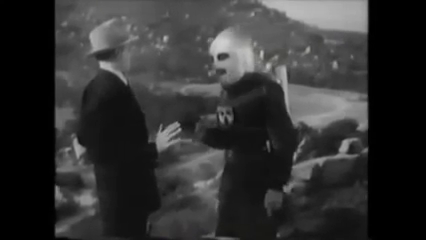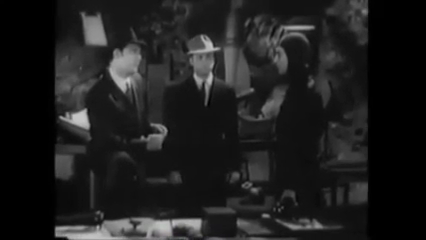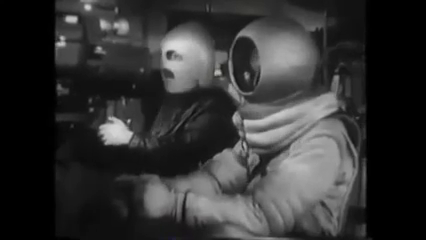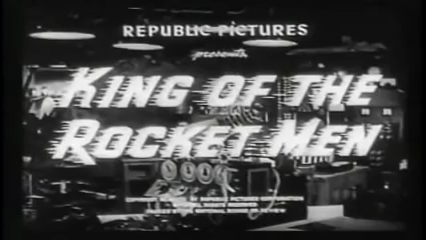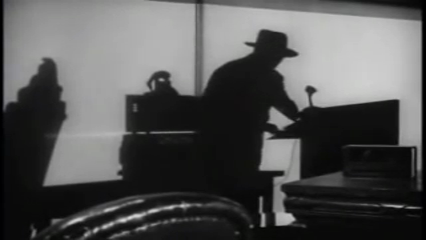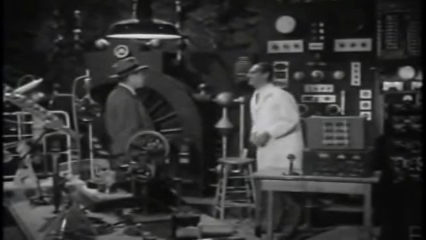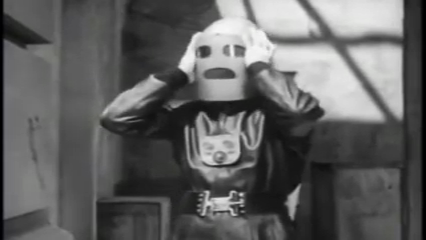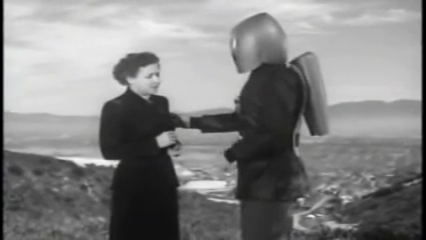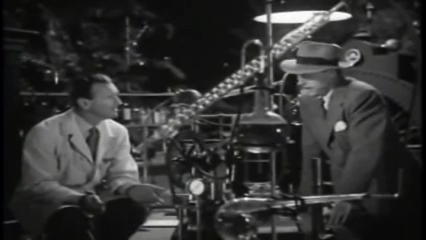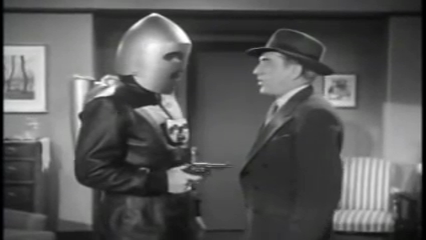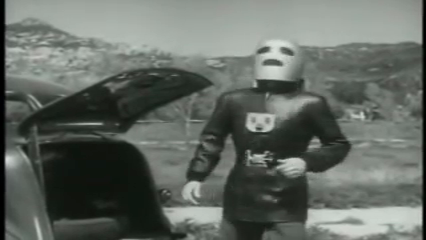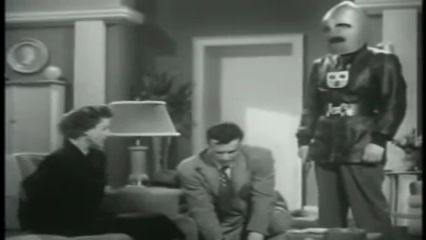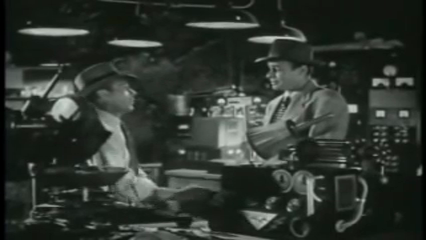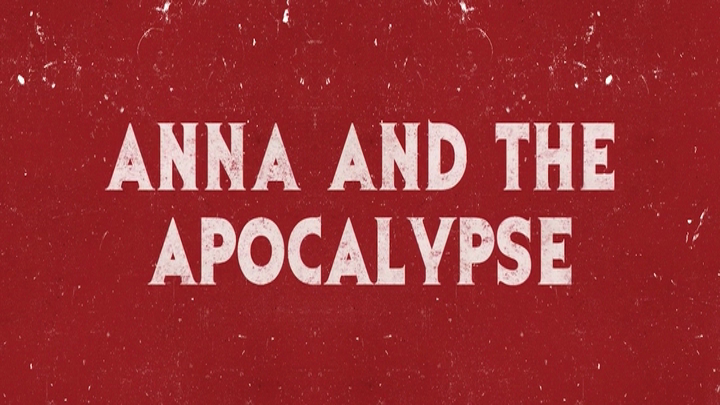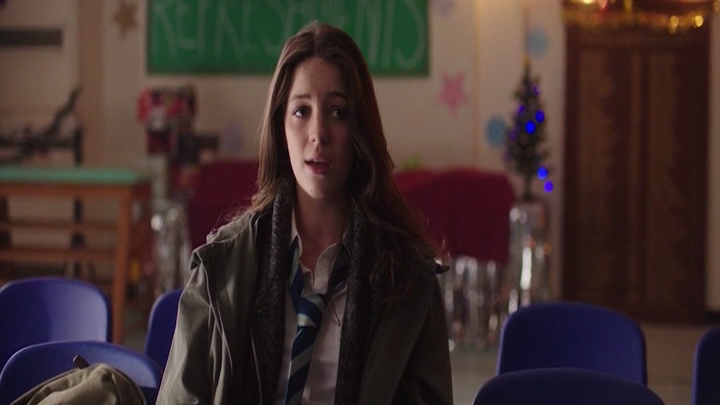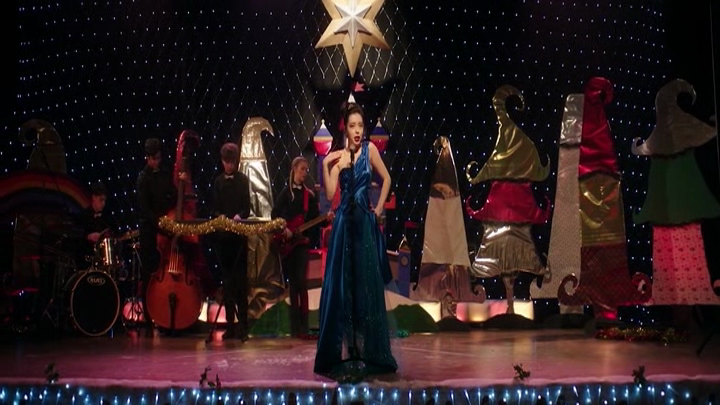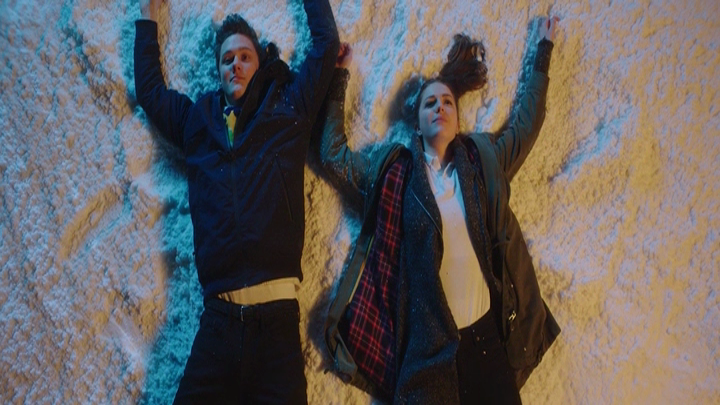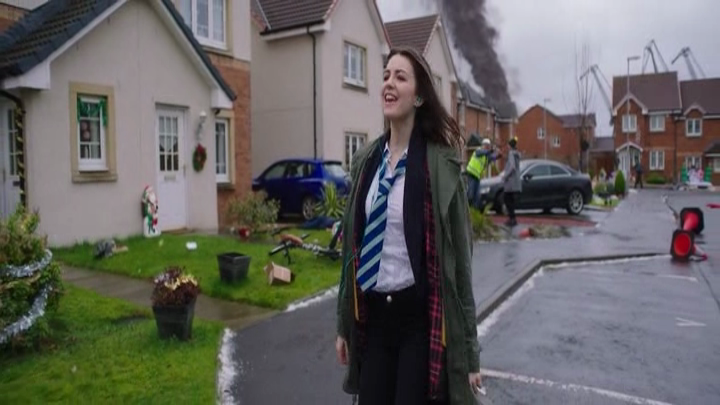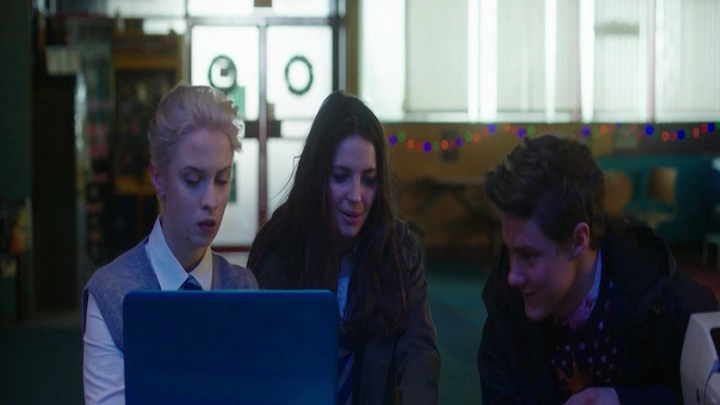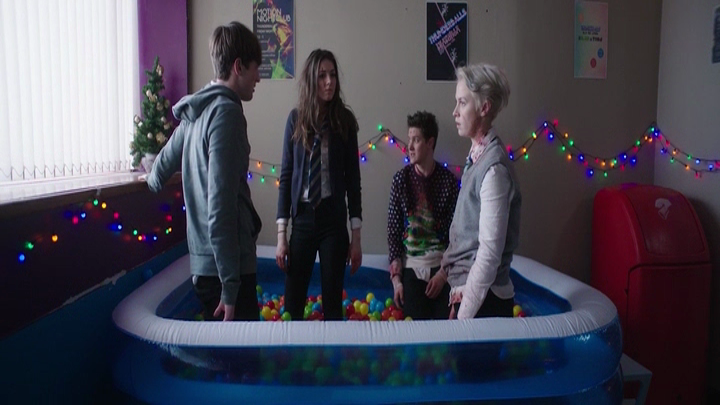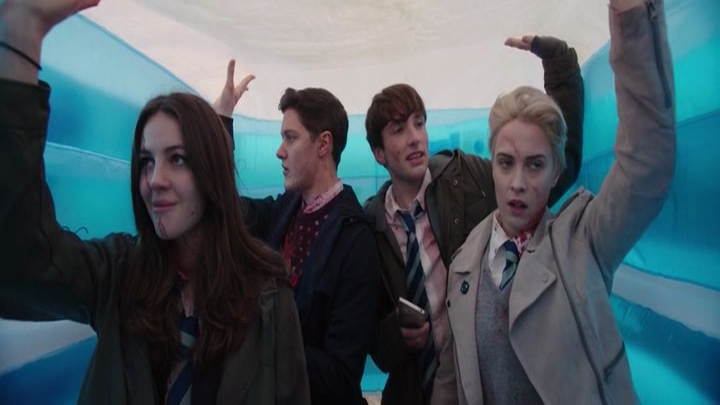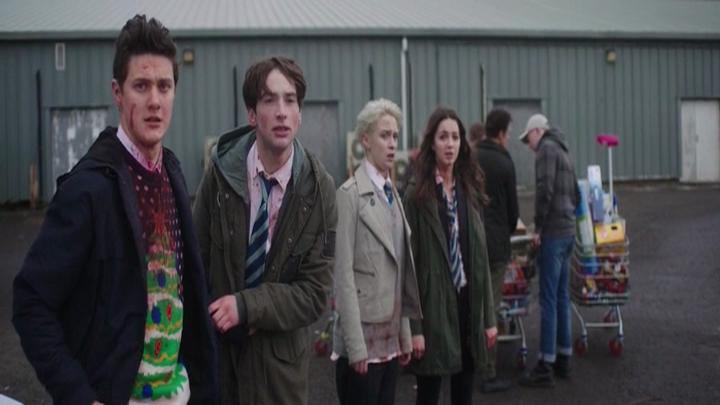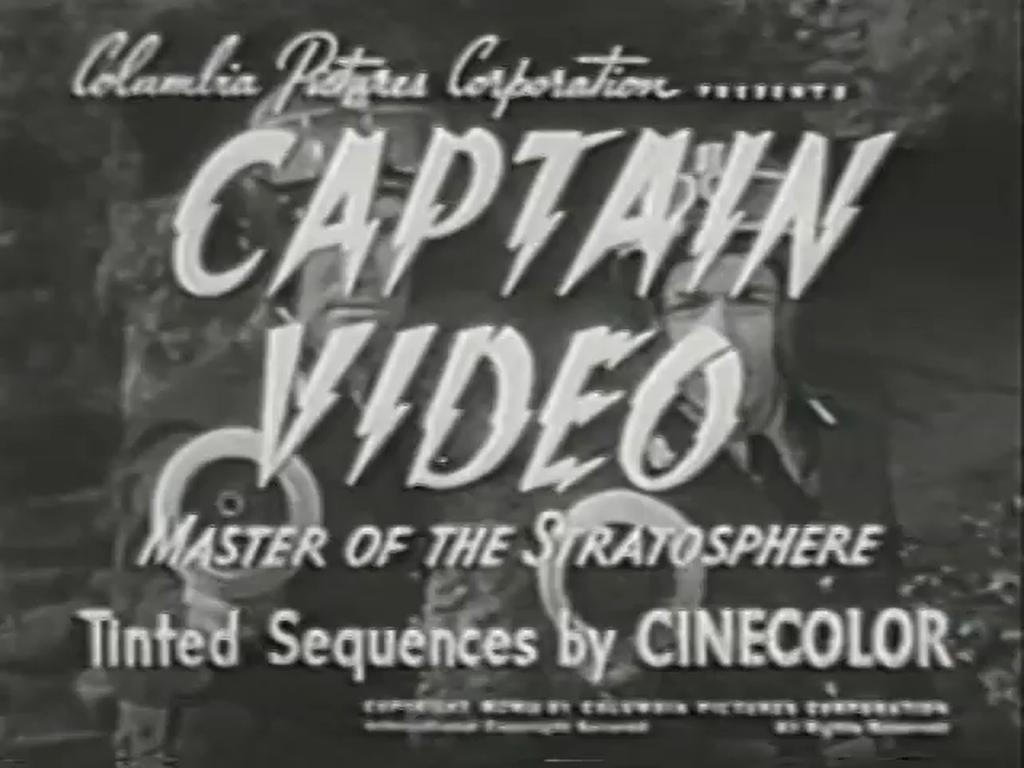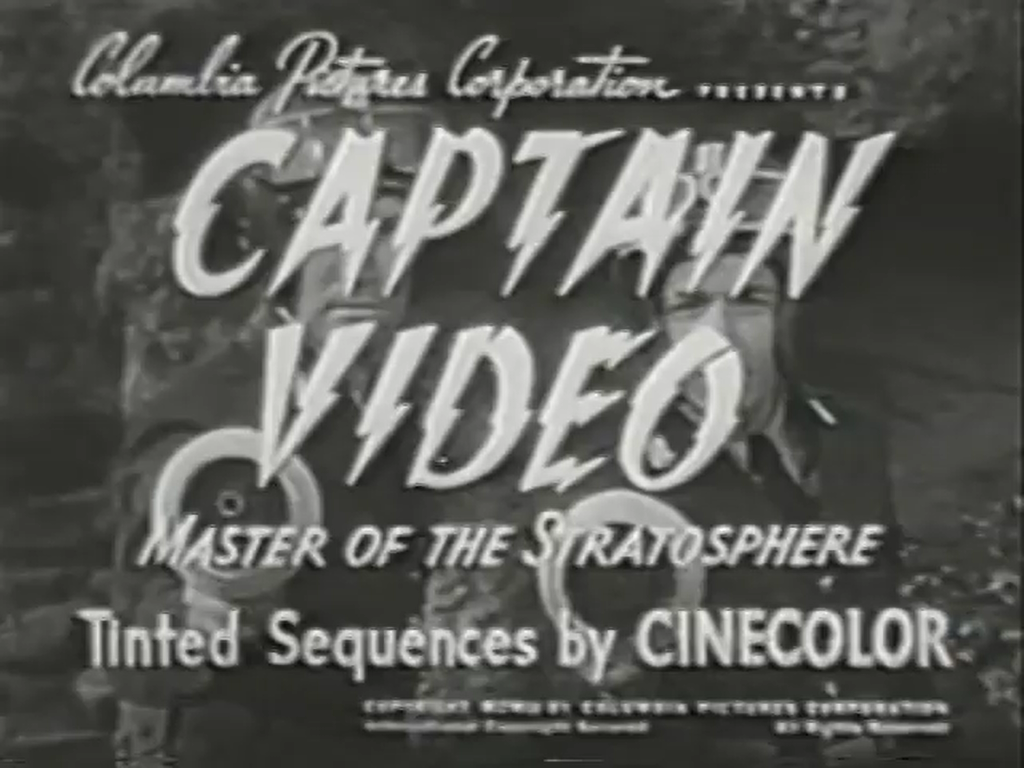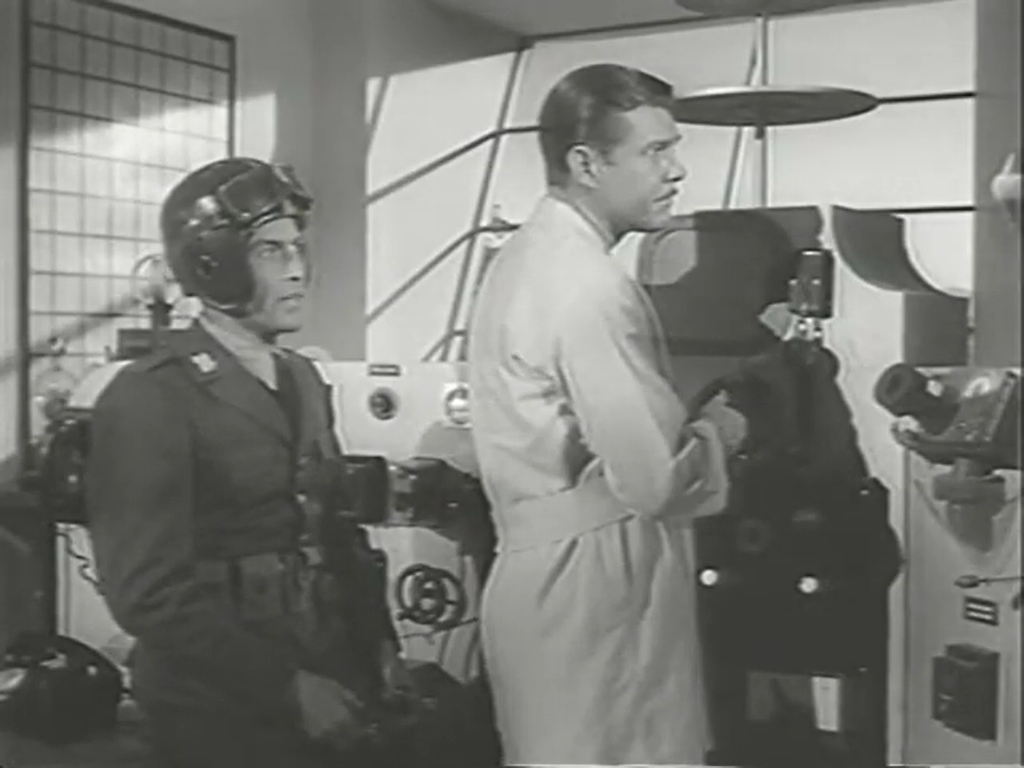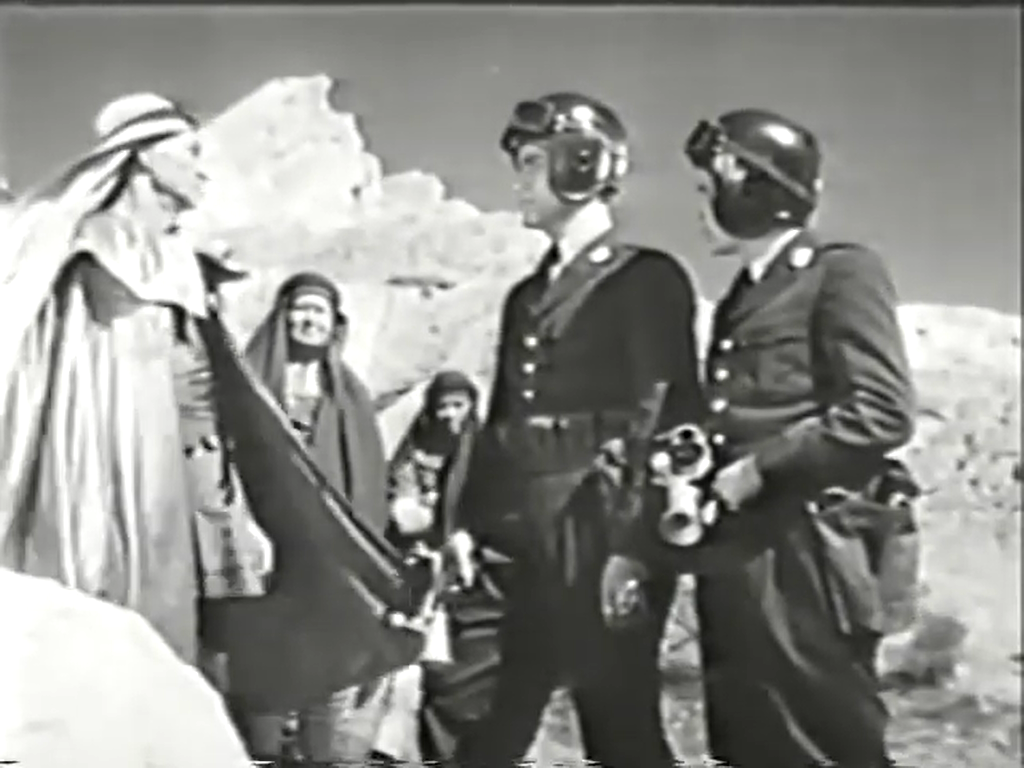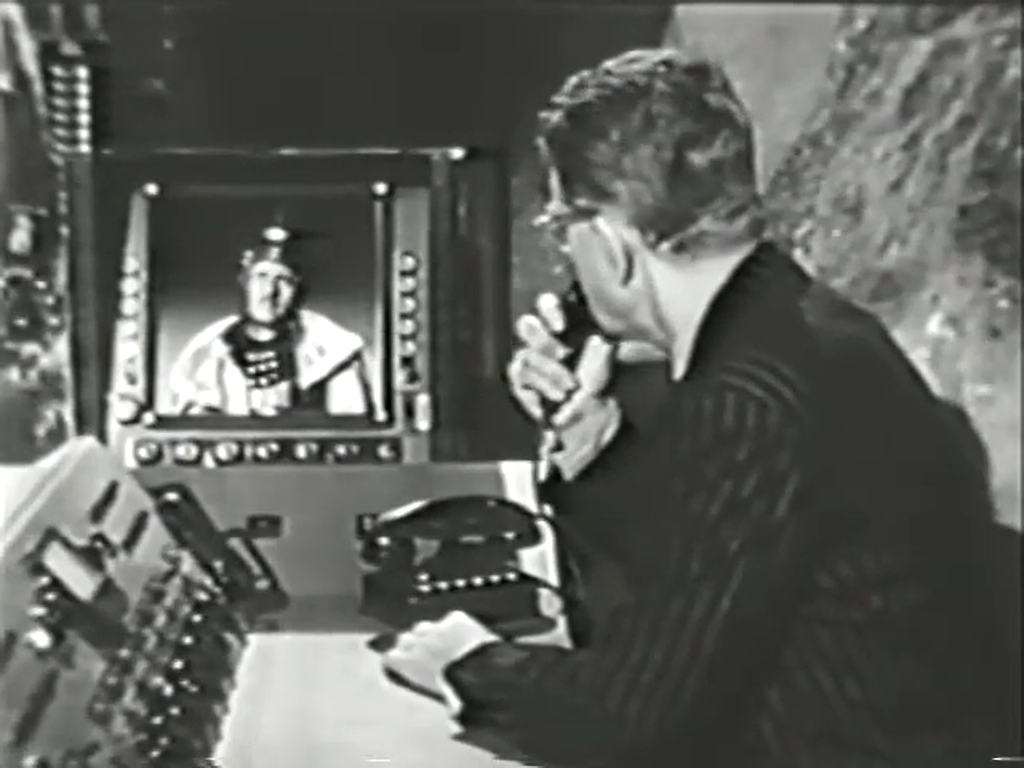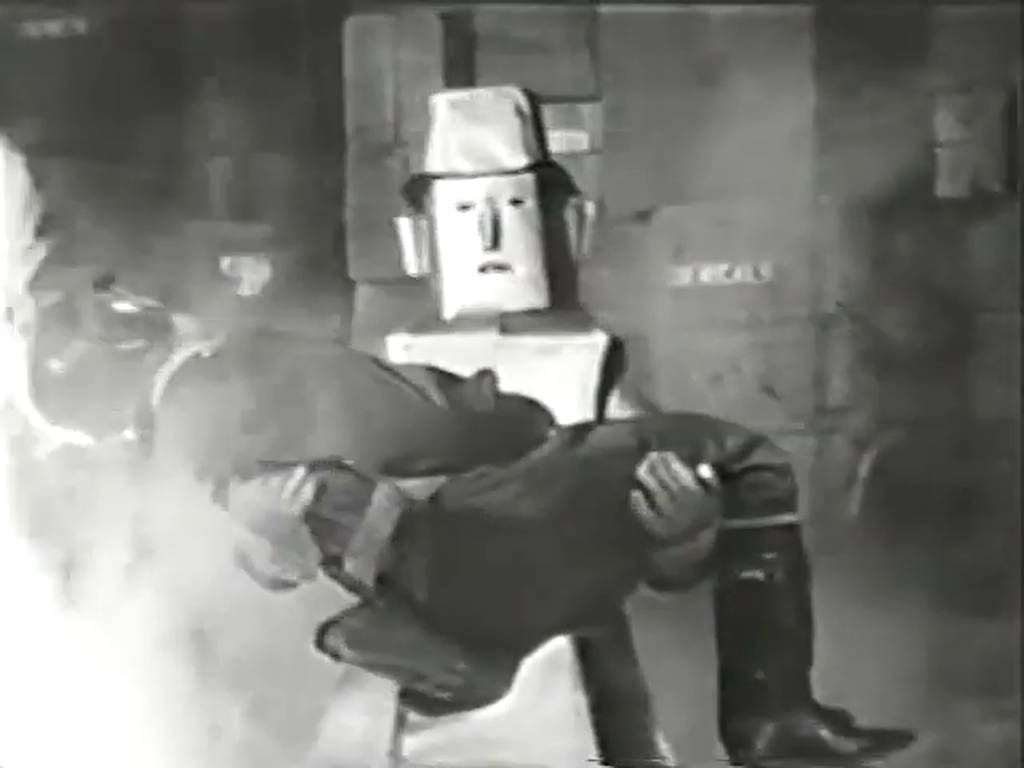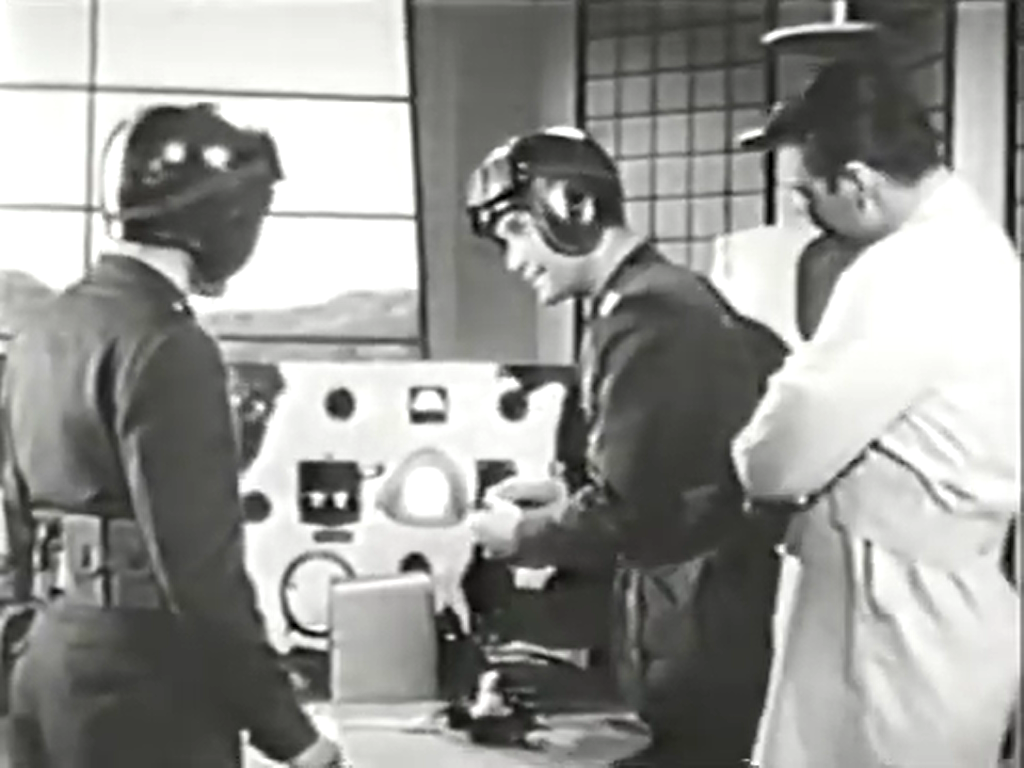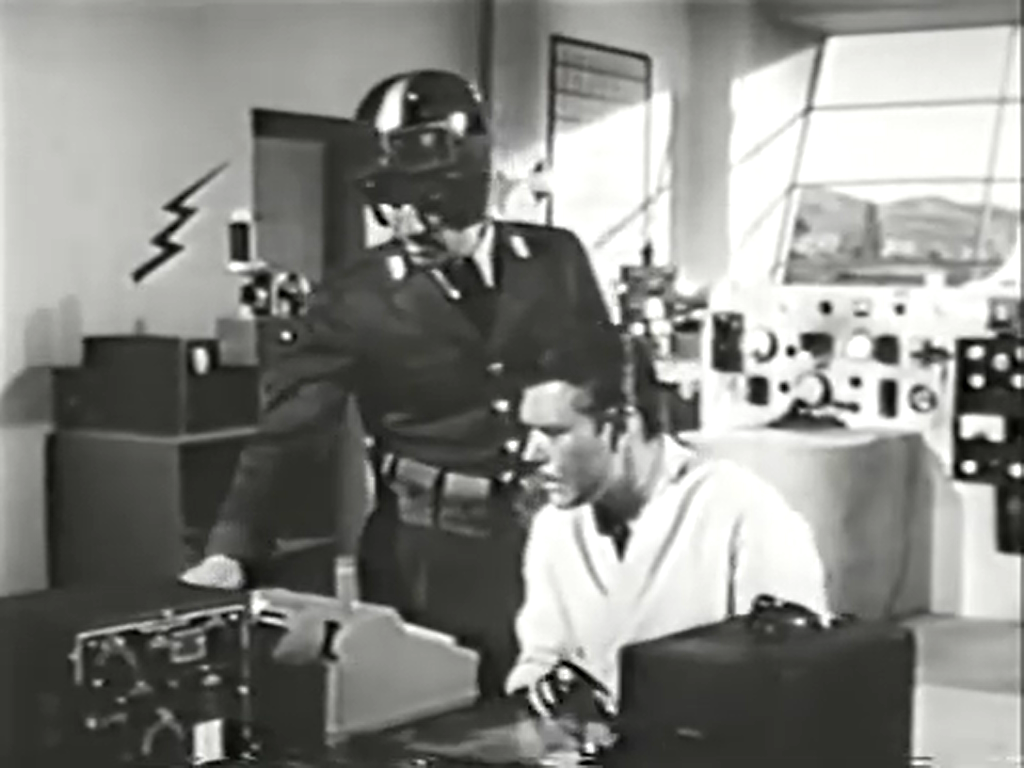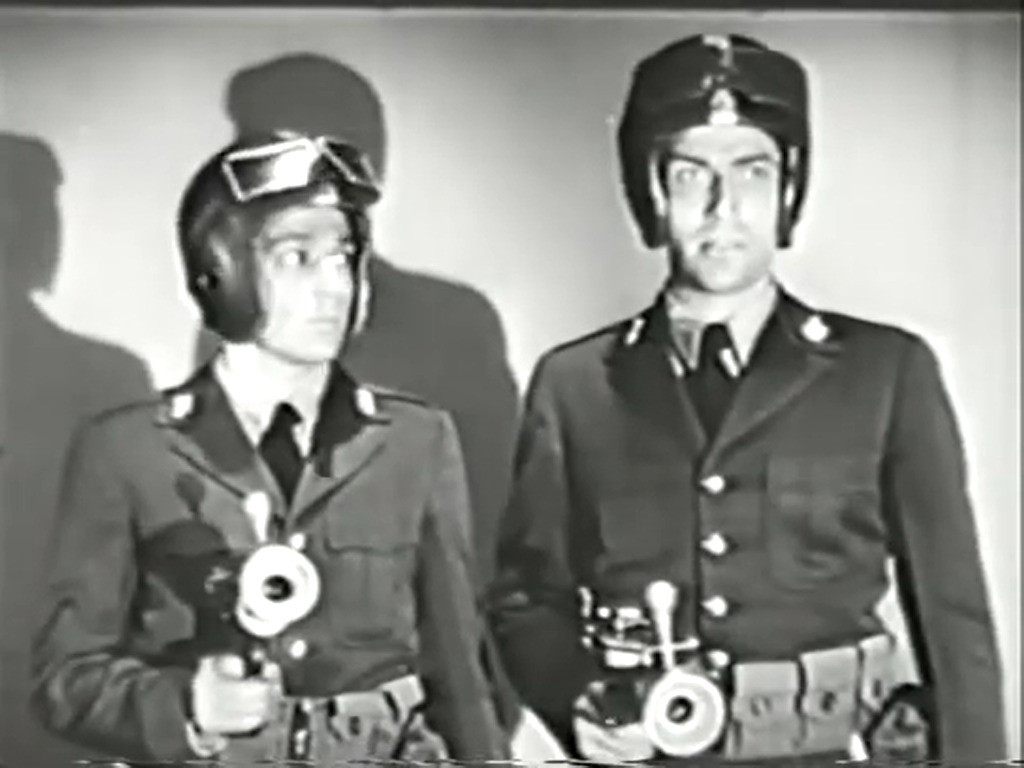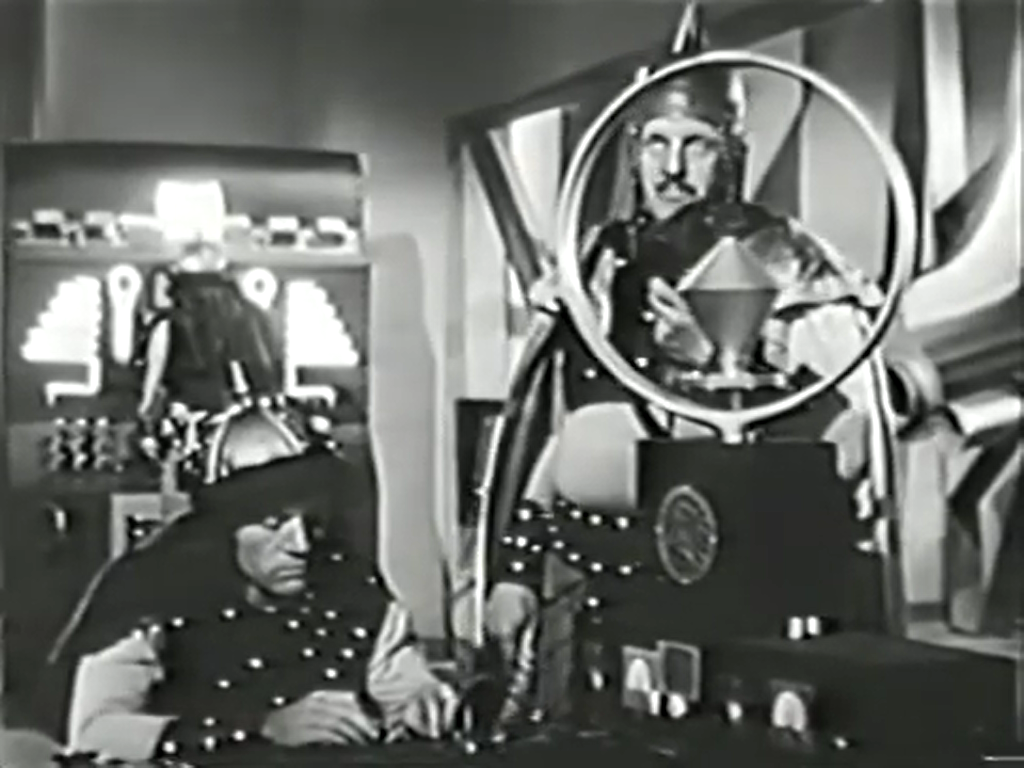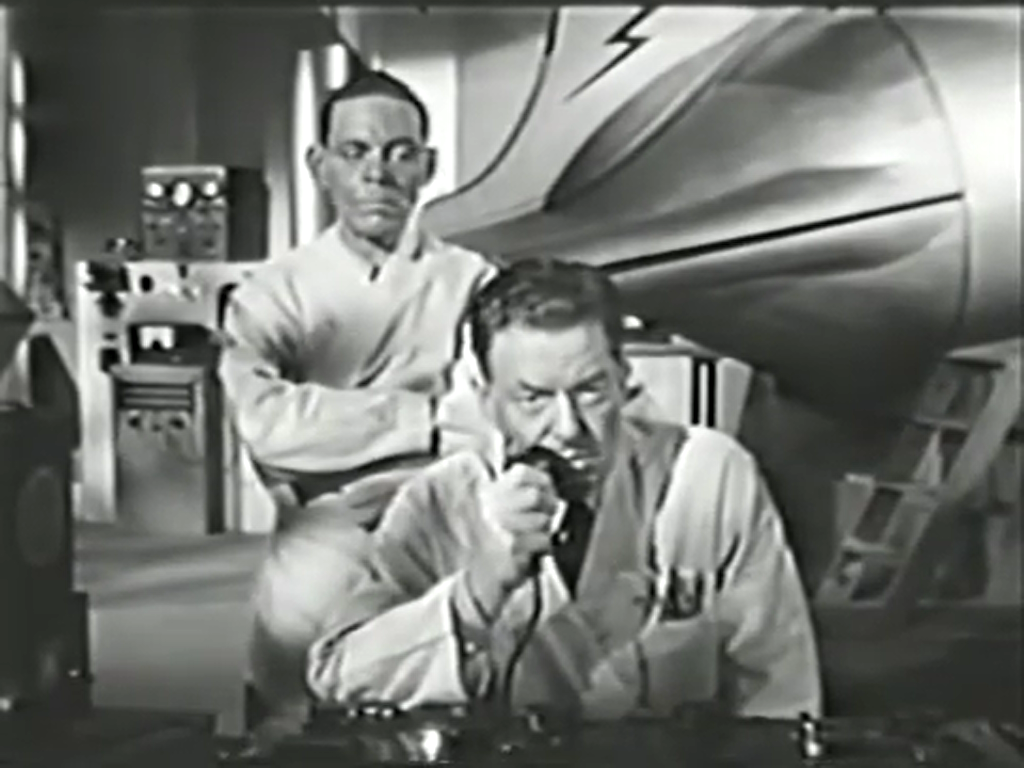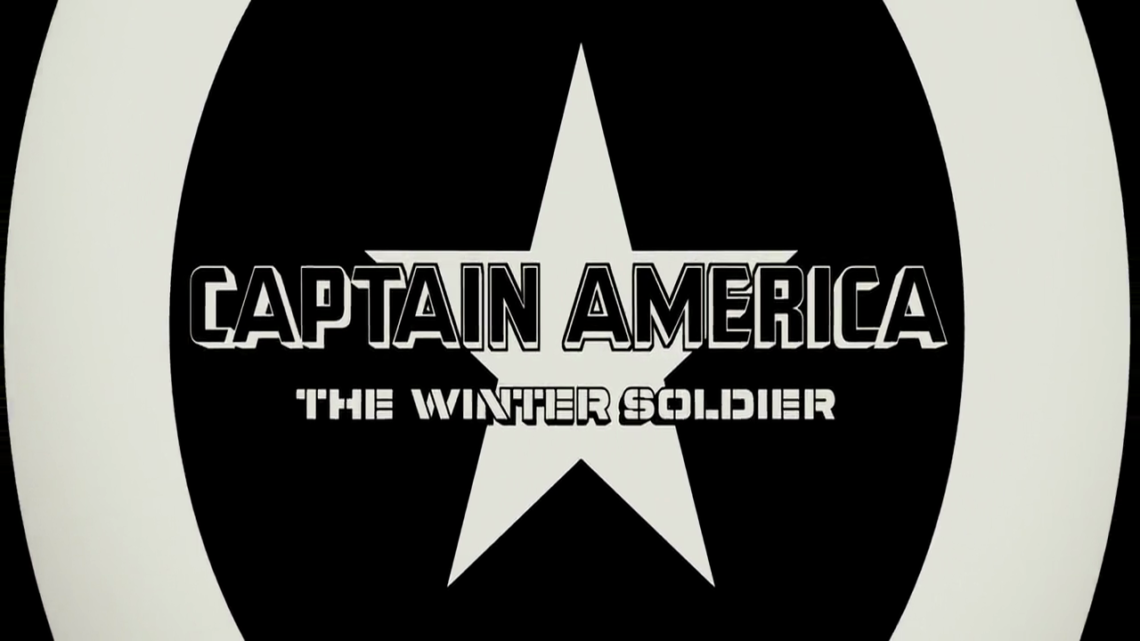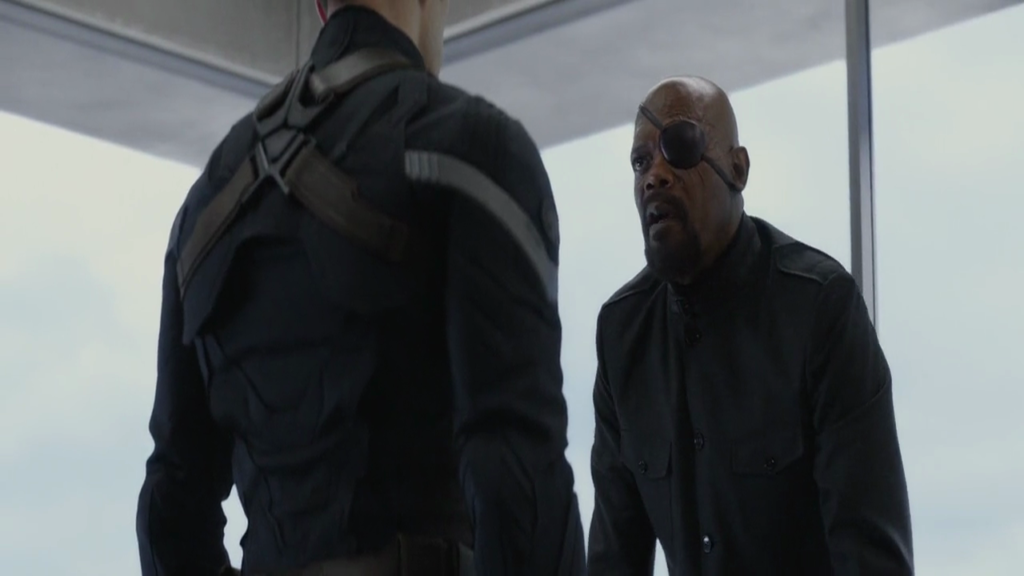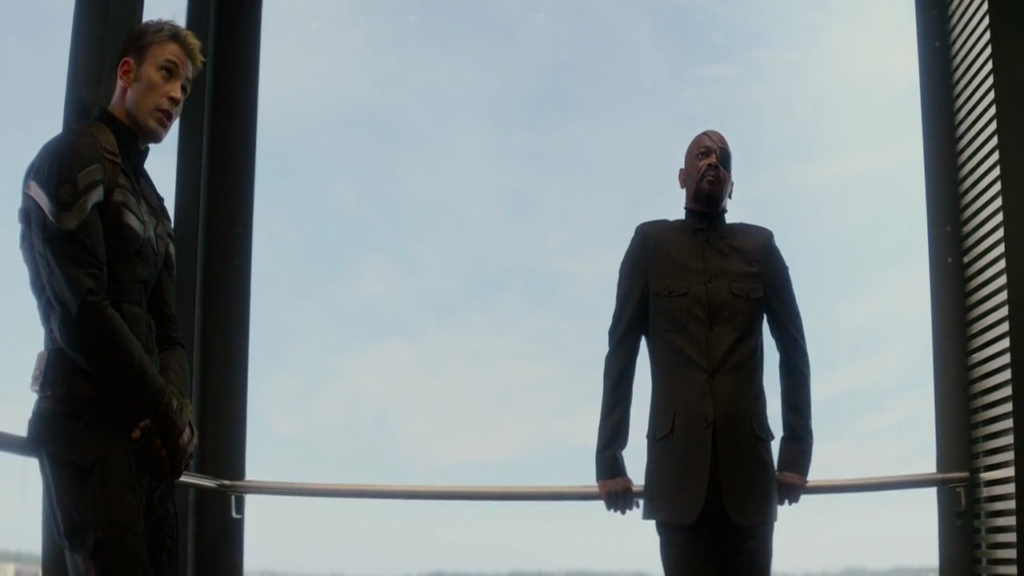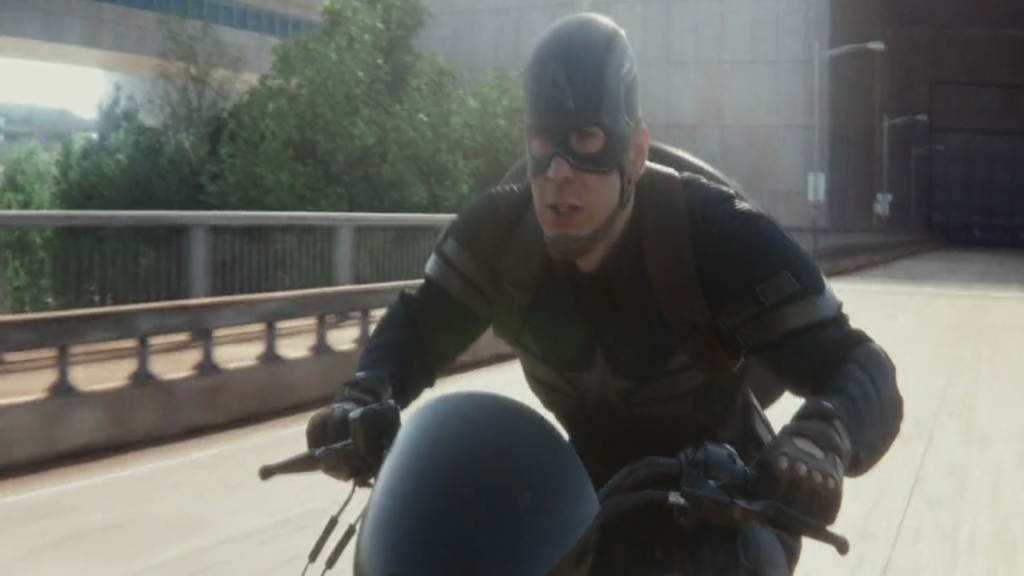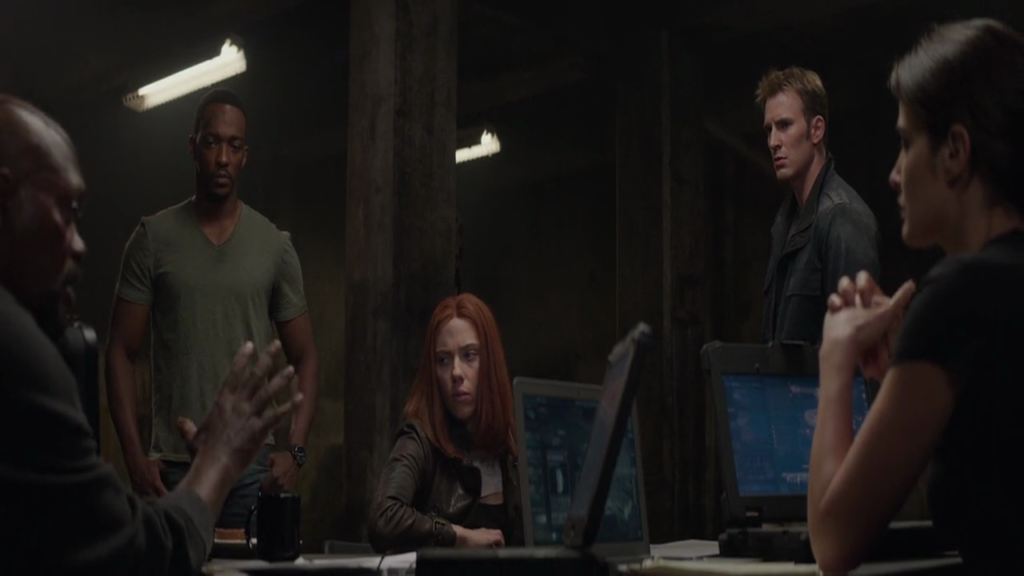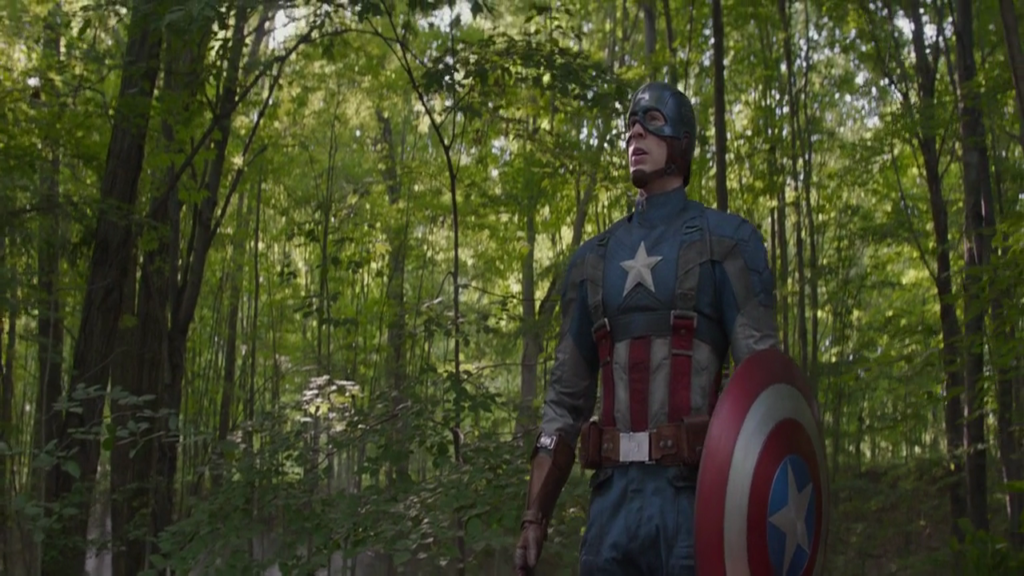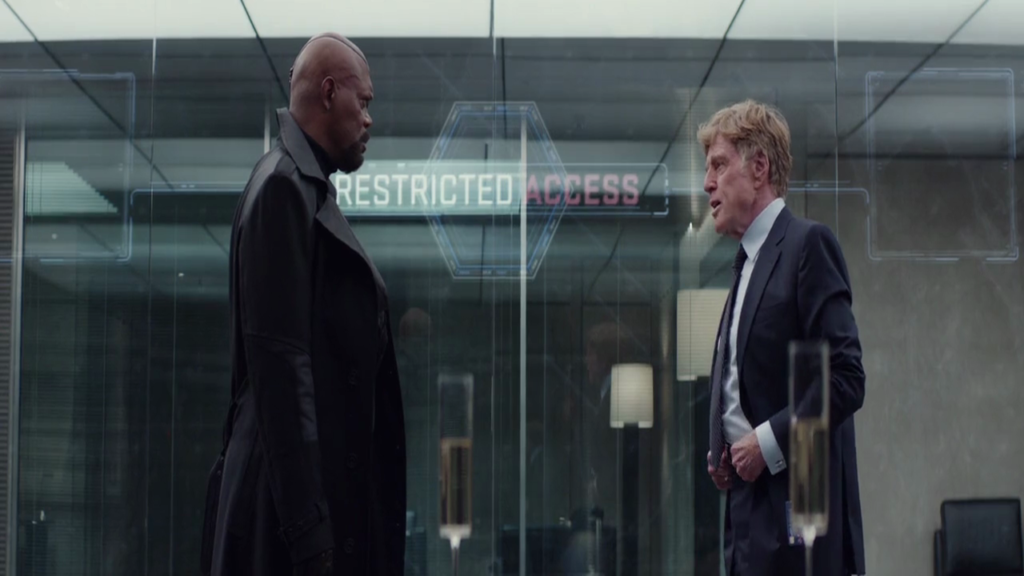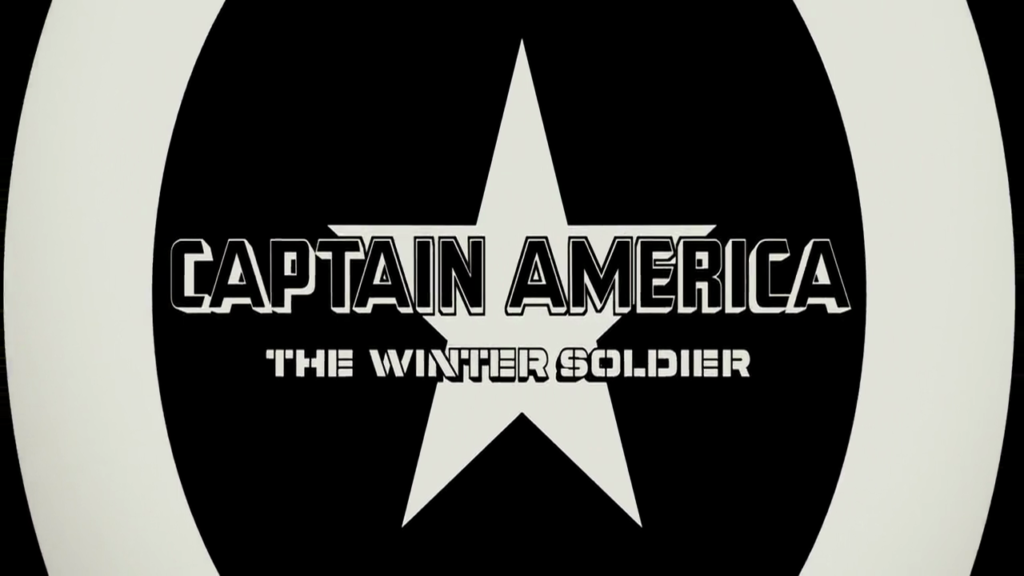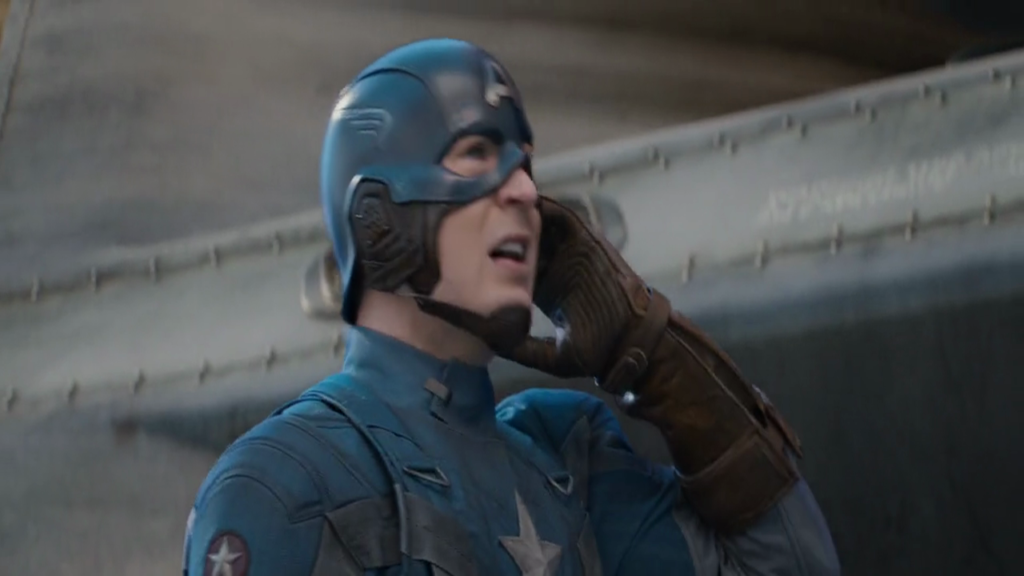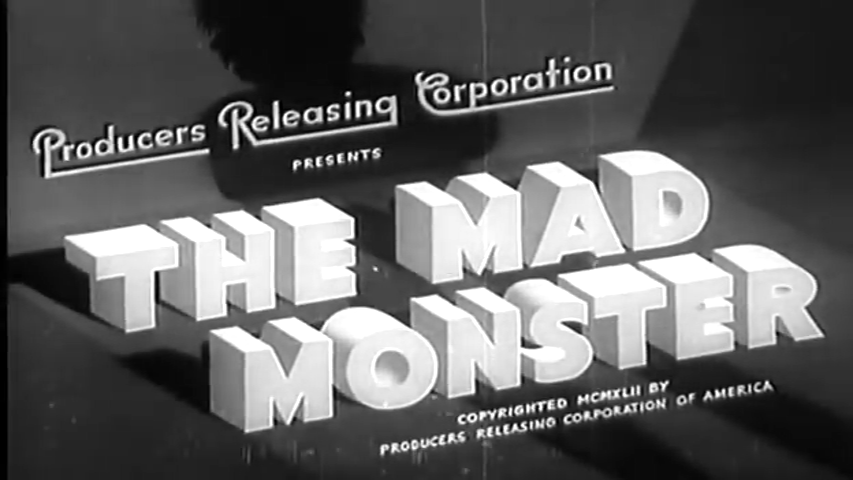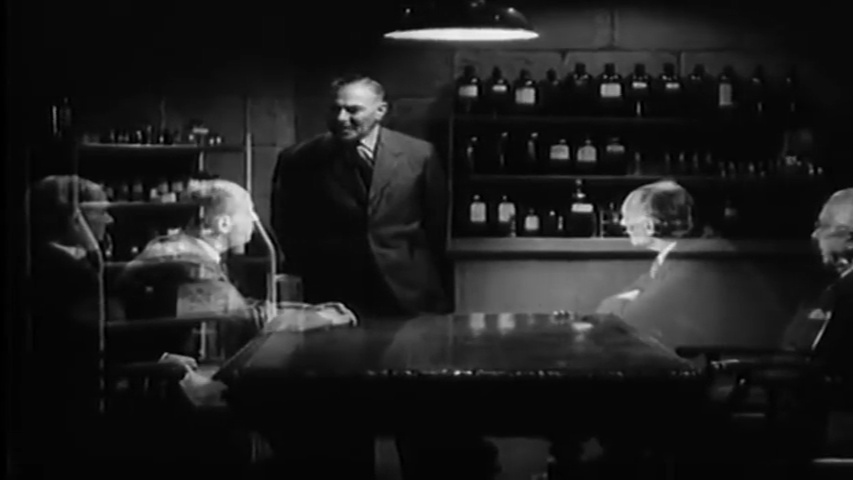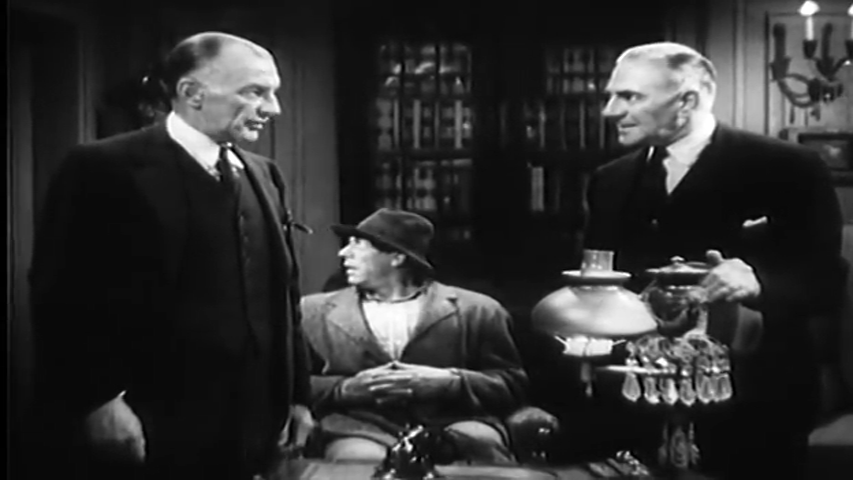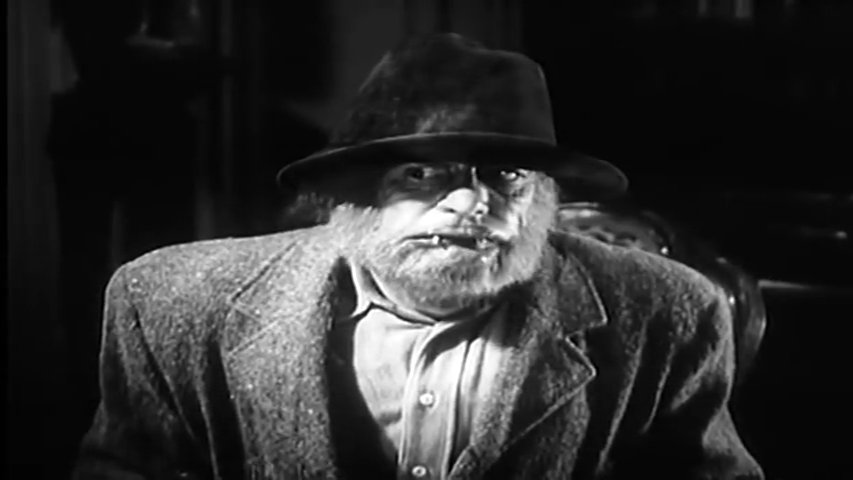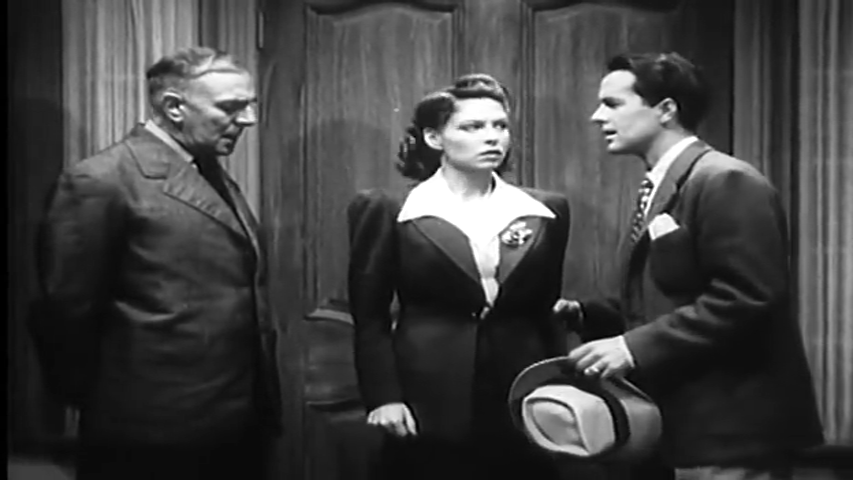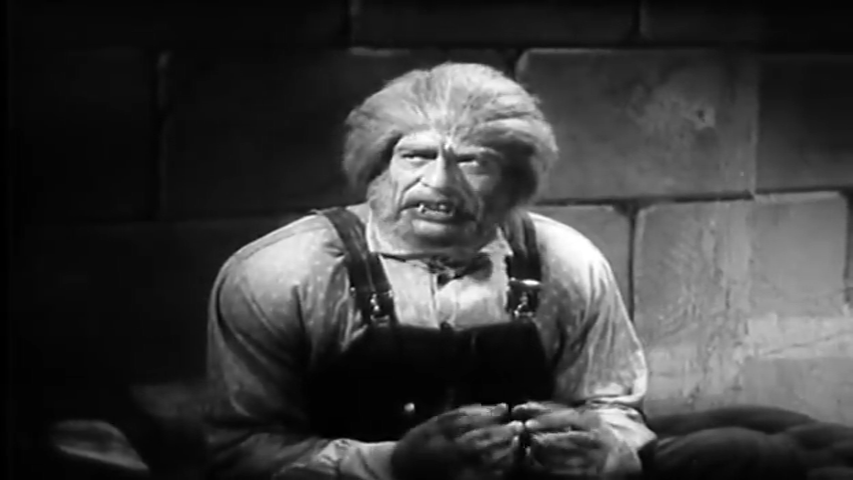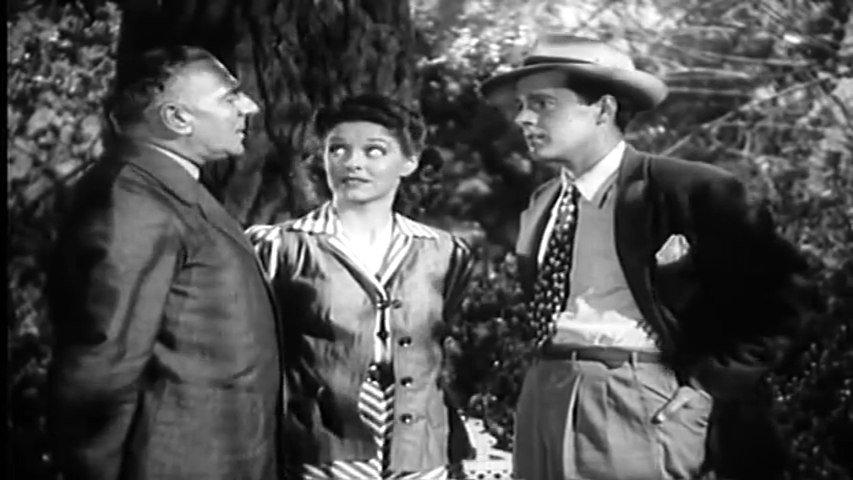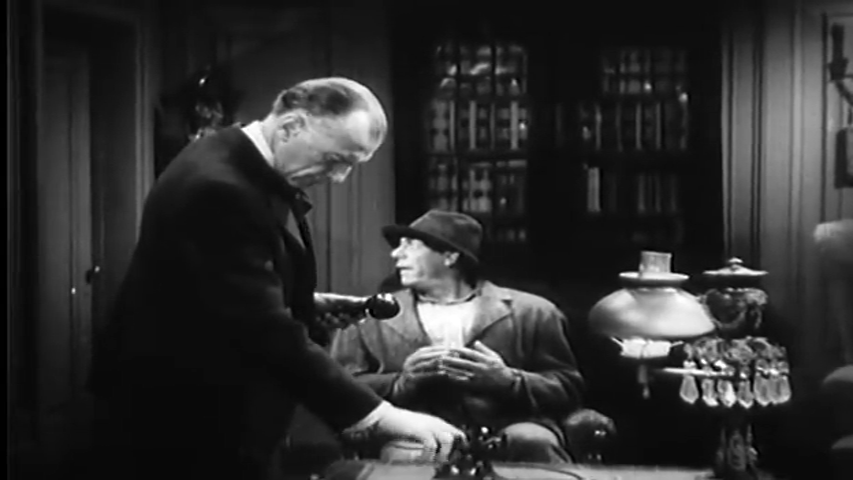-
#401 – Sonic the Hedgehog (1996)
Sonic the Hedgehog (1996)
Film review #401
Director: Kazunori Ikegami
SYNOPSIS: Sonic the Hedgehog is visited with an urgent message from the President of Planet Freedom. When he goes to visit him, Sonic finds none other than his arch nemesis Dr. Robotnik, who actually wants Sonic’s help in destroying Metal Robotnik, a robot who has taken over the city of Robotropolis, where the generator for the city is about to go critical and endanger the whole planet unless Sonic can go and defeat Metal Robotnik and shut the generator down. Meanwhile, Robotnik has his own schemes at work, including one for a certain “Hyper Metal Sonic”…
THOUGHTS/ANALYSIS: Sonic the Hedgehog is a 1997 animated film made from a two-part Original Video Animation (commonly known as OVA) released in Japan. The story opens up with Sonic and Tails relaxing on a beach when they are visited by an owl who is only referred to as “the old man.” He tells them that the President of Planet Freedom wishes to see them urgently. When they arrive, Sonic and Tails find their nemesis Dr. Robotnik there, who actually wants their help. Robotnik has been forced out of his home of Robotropolis by Metal Robotnik, and the generator in the city will overload and destroy the planet soon if it is not shut down. Sonic and Tails agree to do it, and travel to Robotropolis. The story throws you into the middle of this world with little explanation of what is going on (with the brief exception of the world being divided between an upper world of floating islands, and a lower world of darkness where Robotropolis is). That’s not necessary a problem though, as a blue hedgehog that runs really fast doesn’t need too much of a backstory or exposition to engage the viewer. The characters are recognisable and act more or less how you would expect them too, so you get what you would want in that respect in a movie about the video game character.
Sonic and Tails arrive in the lower world of darkness and encounter Metal Robotnik, and battle takes place in the ruins of what seems to be New York City, suggesting planet Freedom is actually Earth in the distant future. The action is fast-paced and delivers what you’d expect, with lots of running and jumping all over the place. Sonic and Tails are saved by Knuckles, who again is more or less the character you would expect him to be. The second part of the film sees Sonic facing off against “Hyper Metal Sonic,” a robot version of Sonic created by Robotnik. There’s not too much to say about this part of the movie, as it is more or less a straight-up fight between Sonic and Metal Sonic, with the other characters sometimes interjecting. Again, this isn’t so bad in terms of the characters and world themselves don’t need to have a comprehensive story mapped out for you. I think it more or less delivers what it needs to, but since it clocks in at under an hour, it feels like there’s a lot more that could have been done.
As mentioned, this movie was composed of a two-part Japanese animation, and re-edited into a single movie for an English release. The dubbing industry at the time was not particularly great, but the English voices are all pretty terrible. Sonic sounds very nasally, but has a bit of the attitude you would expect him to. Tails sounds awful and always sounds like he has a cold. Robotnik’s voice is fairly decent, and sounds fairly similar to the voice he has in the video games that preceded this movie. The animation as well often feels cheap and fragmentary with a lack of frames making the animation feel rough, which destroys any sense of speed and fluidity that the movie really needs to show off Sonic’s speed. A lot of the expressions of the characters and their style or reactions are those that are typical of Japanese animation, and don’t really translate too well. This is again an issue around the early dubbing industry still finding its feet with how to approach the Japanese animation style.
Overall, Sonic the Hedgehog is a brief foray into the world of the titular character. It doesn’t establish any deep story elements or incorporate any of the stories from the games, but relies on the recognisable characters doing what you would expect them to, and leaves the detail of the world to the imagination. The quality of animation and voices really hampers the feel of the film at points, and the style of animation is awkwardly interpreted at times, but there’s some decent action scenes, and portrays the characters in a way that one would more or less expect.
-
#398 – Flying Disc Man from Mars (1950)
Flying Disc Man from Mars (1950)
Film review #398
Director: Fred C. Brannon
SYNOPSIS: Scientist Dr. Bryant goes to investigate a strange aircraft that has has crashed to Earth. There, he finds that a Man named Mato who has come from Mars with the aim of placing the Earth under Mars’ absolute dictatorship. He blackmails Dr. Bryant in this scheme, knowing about his secret past as a Nazi scientist during the war, into using his scientific knowledge and resources to construct weapons to achieve this task. Meanwhile, Kent Fowler, who owns a security company that uses planes, and who was also hired by Bryant to act as security around his factory before the ship crashed, must find a way to the criminal’s plans to steal the components necessary to build atomic weaponry.
THOUGHTS/ANALYSIS: Flying Disc Man from Mars is a 1950 movie serial composed of twelve chapters. The first chapter opens up strongly (as they all do in order to get viewers into the theatre and subsequently back for the remaining chapters), as Dr. Bryant, a scientist and owner of a manufacturing company, hires Kent Fowler, the owner of security company that patrols in a fleet of aeroplanes, to patrol the grounds of his factory, as there have been sightings of strange ships in the sky recently. Bryant sees a ship fall out of the sky and crash nearby, prompting him to go and investigate. When he arrives, he finds a man emerge from the plane called Mato, who claims to be from Mars and has been sent on a mission to conquer Earth to be ruled by the Mars dictatorship, as the Earth’s experimentation with atomic weapons has been found too dangerous to continue, and would have severe repercussions on the solar system. Mato knows about Dr. Bryant’s past of being a Nazi scientist during the war (having intercepted radio communications from Mars), and blackmails him into helping him conquer the earth (and appealing to his inner Nazi by explaining how reasonable it would be to have the use of atomic weapons controlled by an absolute dictatorship I guess).
-
#392 – The Purple Monster Strikes (1945)
The Purple Monster Strikes (1945)
Film review #392
Directors: Spencer Benet, Fred Bannon
SYNOPSIS: A rocket ship from the planet Mars makes a landing on Earth, and the astronomer Professor Layton goes to investigate. he finds a man from Mars as the only passenger on the ship and takes him to his observatory, where he learns the man is actually the first part of an invasion force come to conquer the Earth. After killing Layton, he has the ability to possess his dead body and attempt to get his prototype rocket ship design finish so he can use it to return to Mars and lead the invasion. The only person that can stop him is Layton’s assistant Craig Foster, accompanied by Layton’s niece Sheila.
THOUGHTS/ANALYSIS: The Purple Monster Strikes is a 1945 movie serial. The opening chapter sees a rocket ship crashing to Earth and Professor Layton going to the impact site. There he finds a man from Mars who it turns out to be the first of an invasion force sent to conquer the Earth. The Martian kills Layton and through the use of gas from the Martian atmosphere, is able to possess Layton’s dead body whenever he wants, which he does in order to get Layton’s rocket ship prototype finished, which is the final key to the invasion, as the Martian rocket ships are unable to return to Mars. Learning of the plans of the “Purple Monster”, Layton’s assistant Craig Foster and Layton’s niece Sheila must find a way to foil the Purple Monster’s plan to steal the rocket ship plans. The story unfolds in keeping with almost every other film in the serial format, with each chapter presenting a new scheme from the Purple Monster and Craig and Sheila attempting to foil it. The ability of the Purple Monster to possess Professor Layton’s dead body is a little dark, but it keeps it family-friendly by not dwelling on the details too much. The back-and-forth between the Purple Monster and Layton also adds an interesting dynamic between the characters. The cliffhangers at the end of each chapter are quite ambitious too, and full of high speed chases and explosions. You always know that they’ll result in someone escaping death at the last second, but it still puts some effort into pulling it off.
The characters themselves are a pretty dull bunch. The usual archetypes are all here: the main young white cowboy-esque hero, the token woman, the scientist, the mysterious villain and his henchman: there is nothing inspiring about any of them. We sometimes see the Martian emperor being contacted by the Purple Monster, and his assistant shows up near the end, but neither of them really offer anything exciting or interesting. The whole business with the Purple Monster being able to possess Layton really ties in with one of the main tropes of these serials of the enemy spy hiding in plain sight, and who could be anyone, which really ties into the paranoia around enemy spies in the U.S. during wartime. Other than that though, the cast is rather forgettable.
Overall, while The Purple Monster Strikes has some good special effects and fast-paced action scenes, its characters are dull and bland, and fail to stand out in the format. I think it sits comfortably in the middle of these serials: nothing special, but nothing catastrophically bad either. Being directed by two of the most prolific serial directors, Spencer Bennet and Fred Bannon, they certainly knew what they are doing, but they’re obviously doing it to create a stable source of income rather than trying to innovate at this point into the format’s history.
-
#390 – S.O.S. Coast Guard (1937)
S.O.S. Coast Guard (1937)
Film review #390
SYNOPSIS: The renegade scientist Boroff has invented a disintegrator gas that unsurprisingly disintegrates everything around it when released. Boroff’s ship gets in trouble at sea, leading the coast guard to mount a rescue. However, he is recognised by some reporters along for the ride as a wanted criminal and they give chase as Boroff tries to escape. When one of the coast guards is killed as Boroff escapes, his brother Lt. Terry Kent, also a member of the coast guard, swears revenge and he and the reporters Jean Norton and Snapper McGee attempt to unravel the mystery surrounding Boroff and to put a stop to his evil schemes.
THOUGHTS/ANALYSIS: S.O.S. Coast Guard is a 1937 movie serial by Republic Pictures. The serial starts off with a ship in distress off the coast and the coast guard being deployed. Jean Norman, a newspaper reporter and Snappy McGee, a photographer for the newspaper, recognise the man rescued from the ship as Boroff, a wanted scientist who has been developing deadly weapons to sell to foreign powers. The coast guard give chase, which ends up in the death of one of them, Ensign Jim Kent. His brother, Lt. Terry Kent, who is also a member of the coast guard, swears revenge, and attempts to track down Boroff with the help of Jane and Snapper. The serial unfolds very much like every other serial, so there shouldn’t be no surprise with the cliffhangers, chases and fist fights that fill the chapters. The setting of the coast guard does make it stand out a little, with the scenes at sea and on the ships being well executed. There’s enough variety and a tangible thread of story all the way throughout to make it a watchable serial, but again the format does show its age, and if you’ve seen one you’ve more or less seen them all. The format meant that a lot of content could be produced quickly and at a small cost, but nothing original or innovative was attempted outside of those original constraints.
The characters are one of the noteworthy aspects of the serial, with some recognisable faces amongst the cast. The character themselves are pretty typical: you have the young, courageous American male for the lead, one female character, a mad scientist villain, and a comic relief character. Lt. Terry Kent is the typical lead, this time played by Ralph Byrd, who would be recognisable from the successful Dick Tracy serial that was released earlier in the same year. His character wears a hat most of the time so he distinguishes himself from Tracy enough that you wouldn’t be distracted by the similarities, but Byrd’s appearance in this serial definitely rides the success that Dick Tracy had. The villain is played by famous horror actor Bela Lugosi, who is not in a horror film role because of the ban on making horror movies that was put into effect between 1936 and 1938. The name of his character Boroff is more than likely a reference to fellow horror movie actor and Lugosi’s somewhat rival Boris Karloff. The character of Snappy McGee is very similar to the character of Mike McGurk in the Dick Tracy serial, and I was quite surprised to see it wasn’t the same actor, as they are very similar in terms of looks and mannerisms. Jean Norman’s actress Maxine Doyle also went on to marry the director of this serial (William Witney), so all round an interesting bit of trivia from the casting, even though their characters aren’t as stand-out.
Being set at sea for a decent amount of the runtime, there’s a lot of scenes on the ocean which are all executed fairly well. In the opening chapter we see Boroff’s ship the Carfax caught in a storm, and the set definitely looks like a boat in a storm, with huge waves soaking the set and the actors. There’s some decent effects and props which also breathe some life into the predictable storyline. While setting a serial in the coast guards might not sound as thrilling as a Flash Gordon serial or the like, it still manages a decent story with a good cast. If you liked the Dick Tracy serial, no doubt you would have sought this serial out as well.
-
#389 – Radar Men from the Moon (1952)
Radar Men from the Moon (1952)
Film review #389
Director: Fred C. Brannon
SYNOPSIS: After a series of devastating attacks across the planet, Commando Cody is assigned to travel to the moon in a rocket ship to investigate the theory that the attacks are being launched from there. While there, he finds that the ruler of the moon Retick has been ordering the attacks in order to pave the way for a full scale invasion of Earth, and only Commando Cody and his friends can stop it…
THOUGHTS/ANALYSIS: Radar Men from the Moon is a 1952 movie serial comprised of twelve chapters. The first chapter opens showing aerial attacks across the globe, destroying vital infrastructure. Commando Cody and his friends are visited by a government official who believes that the attacks are originating from the moon. Cody has also come to the same conclusion and coincidentally his friend ted has just finished building a rocketship that can fly to the moon. Cody and his friends travel to the moon to investigate, where they find the leader of the moon, Retik, has ordered the attacks to prepare for a full-scale invasion as the moon’s atmosphere is evaporating and making it uninhabitable. Cody manages to steal one of their ray guns and take it back to Earth, while one of the Moon’s inhabitants, Korg, who is stationed on Earth, tries to get the ray gun back and stop Cody along with his hired goons. The fundamentals of the story have been done in many serials before (Flash Gordon, Brick Bradford etc.) so it’s nothing really original, and it’s got all the usual action scenes, chases, cliffhangers and the like. I’ve reviewed so many of these serials now they all somewhat blend into one, and it takes something special to draw my attention. As I have mentioned before, this is the sort of thing you could get away with at the time, as there was no home media or way to rewatch them, and as these are mostly aimed at a younger audience, they may not have seen the older ones, so it was easy to get away with it. With the onset of television at this time though, people could start watching this serial format at home rather than going to the theatre every week, so serials would become less and less popular, although not too many people would have televisions, so the serial format had a few years of life yet. By this time though, the tropes of the format had been well and truely done to death.
This serial is the first to feature Commando Cody, who would have another serial a year later. The flying rocket suit he uses however, was featured in the 1949 serial King of the Rocket Men. There’s no continuity between the two, but as mentioned the younger audience would probably not have watched the previous serial, but may recognise the imagery, as it was quite a unique suit, and the flying mechanics and effects were something new. Radar Men from the Moon re-uses a lot of the rocket suit footage from that film of him flying through the air and such, which again it could be gotten away with at the time. The rest of the characters are the usual cast for the format: one female, a sidekick, the villainous henchman and the alien leaders dressed in bizarre clothing so you know they are alien. There’s some interesting props and sets when the cast are on the moon, with vehicles and underground bases, but that’s the only thing that really stands out. Overall, Radar Men from the Moon is just another standard sci-fi serial. Nothing horrifically bad about it, but nothing to set it apart from all the others that do the exact same thing. Just another one for the pile I guess.
-
#388 – King of the Rocket Men (1949)
King of the Rocket Men (1949)
Film review #388
Director: Fred C. Brannon
SYNOPSIS: A man calling himself Dr. Vulcan is killing off prominent scientists. After one such scientist, Dr. Millard manages to escape an attempt on his life, he goes into hiding and develops a rocket suit that allows the wearer to fly through the skies. He enlists fellow scientist Jeff King to wear the rocket suit and thwart Dr. Vulcan’s schemes.
THOUGHTS/ANALYSIS: King of the Rocket Men is a 1949 sci-fi serial. The story opens up with the mysterious Dr. Vulcan killing off members of the Science Associates, a group of top scientists. One such member, Dr. Millard, manages to escape one of Vulcan’s traps and goes into hiding, leading Vulcan to believe he is dead. While in hiding, Millard completes his invention of a rocket suit that allows the wearer to fly thanks to a jet pack. Millard enlists the help of Jeff King, another member of Science Associates to wear the suit and track down Dr. Vulcan. The story involves the usual serial tropes, with Dr. Vulcan’s true identity being hidden throughout the serial until the end, and with King figuring out the Vulcan is actually one of the members of Science Associates, he has to work out which one it is, which again is a familiar set-up for these serials. Some of the chapters provide a bit of variety, such as the one where King’s ally Ted suspecting King to be Vulcan and vice versa, which leads to an interesting confrontation, and one which I have not seen before in the serial format, but other than that its the usual back-and-forth between heroes and villains chasing each other down with various plans and traps.
The highlight of this serial has got to be the rocket suit, which allows King (and sometimes Millard) to fly through the air. This is the first serial of three to use the rocket suit, but the only to refer to the hero as “rocket man”. The other two, Radar Men from the Moon and Zombies of the Stratosphere, are all unconnected from one another, and do not give the masked hero a name. Since this serial like most is aimed at getting young viewers into the theatre each week for the next chapter, the rocket suit would definitely have been a hit with them, as there really wasn’t anything like it when it came out. Older viewers would perhaps have been less than engaged with all the usual tropes being wheeled out, but the serial isn’t really for them. There’s plenty of other inventions shown throughout the serial which are interesting enough to change up the pacing, but ultimately it does rely on the tried and tested serial elements.
The end of the film also deserves note, as in some sense the villain wins. Dr. Vulcan steals a device known as the Decimator, and uses it on a tectonic fault-line, causing a huge tidal wave that essentially destroys Manhattan. The footage of the tidal wave is taken from the 1931 film Deluge, in which a rising of sea levels causes most of the world’s population to be wiped out. The destruction looks good and devastating, and it still holds up despite being made nearly twenty years earlier, but obviously if you’ve seen it before it lessens its impact being used a second time here. Nevertheless, it’s very unlikely viewers of this serial would have seen it being used in Deluge due to the time elapsed and there being no re-runs or home releases back then. King manages to eventually stop Dr. Vulcan, but after New York City has been destroyed, and the serial ends with the ambiguous promise to rebuild New York ‘better than ever’. Not exactly a solid resolution, but these serial never are after investing nearly three hours watching them. King of the Rocket Men was released in 1949, after the serial format had peaked, but there were still some good ones being released (most notably the Superman serials, which were quite popular, and some of the best examples of the format). “Rocket man” is somewhat a superhero, with his flying ability and masked persona, and this no doubt would have made the serial stand out, but a lot of the other elements of the serial are pretty standard for the format. Overall it’s a little more interesting than the average serial, but not outstanding.
-
#383 – Anna and the Apocalypse (2017)
Anna and the Apocalypse (2017)
Film review #383
Director: John McPhail
SYNOPSIS: Anna is about to finish high school and plans to travel for a year before going to university, much to her dad’s disapproval. However, a zombie outbreak and the onset of the apocalypse have altered her plans somewhat, and Anna and her school friends must find a way to survive the end of the world…
THOUGHTS/ANALYSIS: Anna and the Apocalypse is a 2017 comedy/horror musical. The film starts off introducing Anna, a high school student who is planning on having a gap year before starting university, much to her Dad’s dismay. Anna and her friends also have plenty of problems at school including the new authoritarian headteacher and the usual teenage trouble. All of these issues are bypassed however, when a zombie outbreak occurs and Anna must find a way to survive with her friends and find her father. The story is fairly standard and doesn’t offer a deep lore-filed story. It’s a zombie outbreak like every other zombie outbreak, and it isn’t integral to the story to go into detail with regards to its origins. What makes the film stand out is that it is also a musical, ending up as a musical.comedy/horror hybrid, the film takes on a lot of different tones, but for the most part I think it does a good job of handling the variety well.
The characters are well defined, and each of the students has their own personality and reacts to the apocalypse differently, which is the sort of diversity you would expect from a group of teenagers. The musical numbers also help in this regard, as each of the main characters has at least a song in which they express their emotions and opinions in a unique way.The songs aren’t so memorable that you’ll remember them after the film has ended, but they are catchy and enjoyable so that a wide range of people will enjoy them. They also help in allowing the viewer to invest in the characters and their emotions, which leaves more of an impact when they die…and they do die, because this film does get quite dark in places and makes you feel the weight of their sacrifices.
Anna and the Apocalypse is not a big production affair, but it doesn’t need to be, as it keeps its focus on the characters and small-scale scenes that feel very personal. I suppose it also counts as a Christmas movie, although it’s definitely not very festive. I can’t find much to criticise in this film: it works within its boundaries and creates a simple story crossing genres, with a diverse cast and personal interactions augmented by serviceable performances and music. It’s not rewriting the genre, but it’s more than entertaining enough to sit through as an alternative Christmas movie.
-
#379 – Captain Video: Master of the Stratosphere (1951)
Captain Video: Master of the Stratosphere (1951)
Film review #379
Director: Spencer Gordon Bennet, Wallace A. Grissel
SYNOPSIS: The heroic Captain Video and his Video Rangers from across the globe help maintain peace on the planet Earth, but when Earth becomes subject to meteor bombardments from the planet Atoma, Captain Video must find a way to thwart the evil schemes of it’s leader Vultura before it is too late…
THOUGHTS/ANALYSIS: Captain Video: Master of the Stratosphere is a 1951 movie serial. The serial stars (as the title suggests) Captain Video, the leader of an organisation called the Video Rangers, who help protect the Earth. When the Earth becomes subject to meteor bombardments originating from the planet Atoma, Video must stop them before they can invade the Earth. The plot resembles the vast majority of sci-fi serials, which copy the highly successful Flash Gordon and caught the genre in a thinly-veiled repetition of its plot and characters for over twenty years. A lot of the story revolves around Captain Video trying to prove that the scientist Dr. Tobor (yes, that is ‘robot’ spelled backwards) is working with Atoma’s leader Vultura, as Video and Vultura try to outsmart and thwart the other’s plans. I think this format and plot structures were gotten away with for two reasons: one, there was no way to re-watch old serials once they had first aired at the theatre, so new ones could come out with the same story and similar characters; particularly since serials such as this would be aimed at kids, who would not have seen earlier serials. The second reason being that the second world war probably didn’t leave much room or money for the development of anything too original or ambitious, as resources would have been focused elsewhere. Nevertheless, by the time this serial was released in 1951, there probably should have been some effort to change the formula or offer something new.
Despite it’s lack of originality in the story department, there’s still a decent amount of variety going on. The early chapters see Video travelling to the planet Theros, where the peace-loving people are under attack by Vultura’s forces, and Video has to teach them to be guerrilla fighters and fight back. Again, this plot structure shows up in many previous serials. The next major chunk of the serial consists in the back-and-forth between Tobor and Video, as they try and outdo each other on Earth. Video and Vultura only meet in the final half of the last chapter, which feels like a waste. The serial however, does keep things interesting with a whole host of gadgets and inventions that would undoubtedly spark the imaginations of youngsters watching. The guns that the Rangers use that shoot out sparks are quite a nice effect of the time. However, the serial often falls into the trap of explaining what is going on and what all these inventions do rather than actually showing them, mostly due to budget constraints, but often the plot is explained before it happens, leaving little surprise or tension. The inventions too have bizarre technological names, and accompanied techno-babble that try to justify the implausible things they do.
Most of the characters are based off the ones on the TV series, with Captain Video being the typical white American male hero that is the star of all these serials. His younger sidekick is strangely only referred to as “the Ranger” and never given an actual name. This is in keeping with the TV series, but other rangers are shown to use their own names, so it’s odd that he doesn’t. Maybe it’s a way to get kids to imagine themselves in the role of the young teenage sidekick, as anyone could be “The Ranger”. There’s also Ranger Gallagher, who does all the technical stuff at Video headquarters, and Vultura clearly has some east Asian influences in his design, again echoing the “Ming the Merciless” type villain that originated in Flash Gordon. One final note about the characters is that while you will expect these serials to only feature a white cast, there is not a single woman anywhere featured in the serials fifteen chapters. Often there is usually a solitary token female character that sometimes serves as the protagonist’s love interest, but there is none at all here, not even in any of the backgrounds. I suppose the lack of a female character could be attributed to the fact this is geared towards a younger, male, audience, who would not be interested in a female character or a romance sub-plot, but having this cast of inter-changeable white men interact with each other really emphasises the monotony of the story at points.
The serial was directed by Spencer Bennet, a veteran of these kinds of serials, so he had plenty of experience in what to do. Some of the effects are fairly decent; as mentioned, the ray guns the Video Rangers use is pretty cool, and their super-fast car stands out with its unique look. There is also a ‘space platform’ which allows transportation between earth and Atoma, which apparently is millions of miles away. Captain Video also has a rocket ship he travels in, which again adds some variety. Some of the effects (such as the rocket ship in flight) are done through using hand-drawn animation, which allows a lot more freedom in terms of effects, although this is not the first time this was done, having been integrated into the Superman serial a few years earlier. Overall, I think I can place the Captain Video serial just above average in the miasma of similar sci-fi serials: it has a lot of the well-worn tropes and characters, but has some decent effects and various inventions that add a bit of extra spice. It’s obviously meant for a younger audience, but there’s enough content for those who haven’t seen such a serial before to enjoy.
-
#378 – Captain America: The Winter Soldier (2013)
Captain America: The Winter Soldier (2013)
Film review #378
Directors: Anthony Russo, Joe Russo
SYNOPSIS: When S.H.I.E.L.D. director Nick Fury is assassinated, Steve Rogers (Captain America) is on the trail of those responsible, but he is told to trust noone. As he investigates, he finds a shocking discovery that goes right to the heart of S.H.I.E.L.D. itself…
THOUGHTS/ANALYSIS: Captain America: The Winter Soldier is a 2013 superhero film that forms part of the Marvel Cinematic Universe (MCU). The film starts off with Captain America in the thick of a mission to rescue hostages from a S.H.I.E.L.D. ship. There’s plenty of fluid action that provides a strong opening for the film that requires no knowledge of the characters, and eases into the story in a fun and exciting way. The plot takes on a number of twists and turns as S.H.I.E.L.D. director Nick Fury is seemingly assassinated and Captain America must investigate S.H.I.E.L.D. itself with the help of Black Widow. The film mixes layers of action, espionage and intrigue as it unravels the conspiracy surrounding S.H.I.E.L.D. It’s a strong story that will keep viewers engaged, as well as exploring the character of Captain America and elements of the Marvel Cinematic Universe. It is a fine balance to give each of these elements the right amount of focus, but the film largely succeeds in doing so. If I were to pick an issue with the story, I would say that there’s a bit of a conflict between the film being self-contained and its part in the larger cinematic universe, insofar as the revelations about S.H.I.E.L.D. should have significant ramifications, but it seems they are more or less curtailed by the end in order to keep the film self-contained with a distinct resolution. Overall though, the story is fairly strong.
Captain America as a character is a soldier, a leader and a hero, and I think all of those aspects to him are given a good amount of development. How he relates to those around him and what his part is in protecting and inspiring them is something he has to constantly work through as the film progresses. The supporting cast of Black Widow and Nick Fury also get ample screen time in order to develop their characters and play a significant role in the story. The “winter soldier” also has ties to Captain America, and with everything else going on, it feels like there could have been more done with his character, but this instead seems to have been postponed in order to be dealt with in a sequel. Villains typically get short-changed in these films, as they are almost entirely self-contained in the film and do not get referenced outside of it. Pearce, the villain here, is a bit more interesting, and has particular relations with a number of characters. He doesn’t have any particular superpowers, so he’s more of a mastermind, with the winter soldier handling the action parts of the villainy. Sam Wilson, a veteran soldier, also has an interesting character arc which gives Captain America a bit of a grounding as he interacts with the soldiers without superpowers who go to war. A lot of characters, but again it’s all handled fairly well.
The style and effects in the film are just about what you would expect from these Marvel films. There are no surprises, but it has a good budget, and keeps things consistent. The fight scenes are well choreographed, and highlight the strengths of the characters. There’s nothing overwhelmingly special about the film, but it has a lot of content that pushes and develops characters in new directions and explores new facets of their characters. Like with most Marvel films it’s not going to re-define the genre, but it shows a marked improvement on earlier sequels in the MCU (Iron Man, Thor) by focusing a little more on interesting character development, varied villains and weaving a stronger story around the heroes.
-
#376 – The Mad Monster (1942)
The Mad Monster (1942)
Film review #376
Director: Sam Newfield
SYNOPSIS: Dr. Cameron, a scientist, has been experimenting with genetic modification, a practice which has left him the subject of ridicule and forces him from his university job. Out in the country, he experiments on his hired help Pedro to turn him into a werewolf, but when Pedro starts killing people in his werewolf form, Dr. Cameron finds it increasingly difficult to keep his experiments a secret…
THOUGHTS/ANALYSIS: The Mad Monster is a 1942 horror/sci-fi film. The film centres around Dr. Cameron, a scientist whose experiments in genetic engineering have left him ridiculed and cast out of the scientific community. He moves out into the country with his daughter Lenora to carry on his experiments, using his hired help Pedro as a test subject. Cameron successfully develops a serum that can turn Pedro into a werewolf-like creature, which ends up escaping and killing a little girl. Pedro is unable to remember the time when he is transformed, so Cameron uses this to his advantage to take revenge on those that ridiculed his research. The story is quite straightforward, and there’s no real surprises. The plot is all explained at the beginning, and it is up to the characters to unravel the mystery themselves. there’s nothing really special about the film, it’s another simple story of science going too far that has been done many times before (and after).
The film attempts to create a horror atmosphere through some creative use of lighting and dark, minimal sets. Although all the violence happens off-screen (this is the 1940′s after all), so it is difficult to get much of an idea of how vicious this werewolf creature is. The cast of characters is pretty bland, but well defined, and everyone contributes to the story in some way. The acting and delivery of lines is sometimes a bit flat, but credit to the actor playing Pedro, who gives an expressive performance. One of the biggest drawbacks of the film is that it often feels boring, with scenes that drag on too long consisting of dull conversations that go nowhere. You become very aware of the beginning and ending of scenes as they mostly end on flat notes without much fanfare, leaving you to wonder what the point of it was.
As mentioned, the production values of the film are rather low, owing to the general state of the world at the time and having more pressing issues to address. Nevertheless, there are a few positives, such as Pedro’s “werewolf” make-up or costume being quite well put together. Sometimes Dr. Cameron delivers a good speech under an atmospheric light, but other than that there’s really not much else that stands out. The Mad Monster is an entirely forgettable film with a typical message of science going too far, and a blandness in terms of its looks and its dialogue leave little to recommend it.
